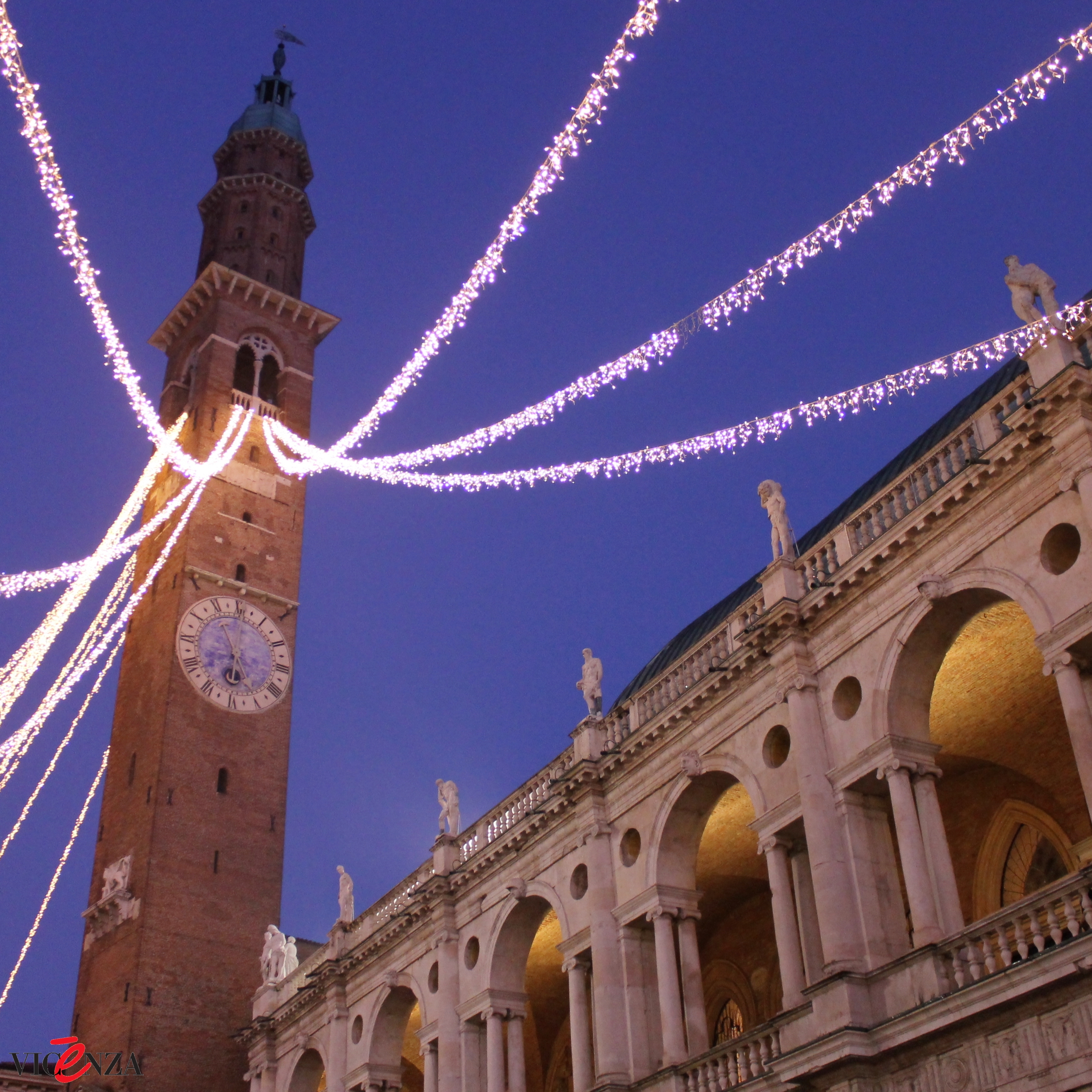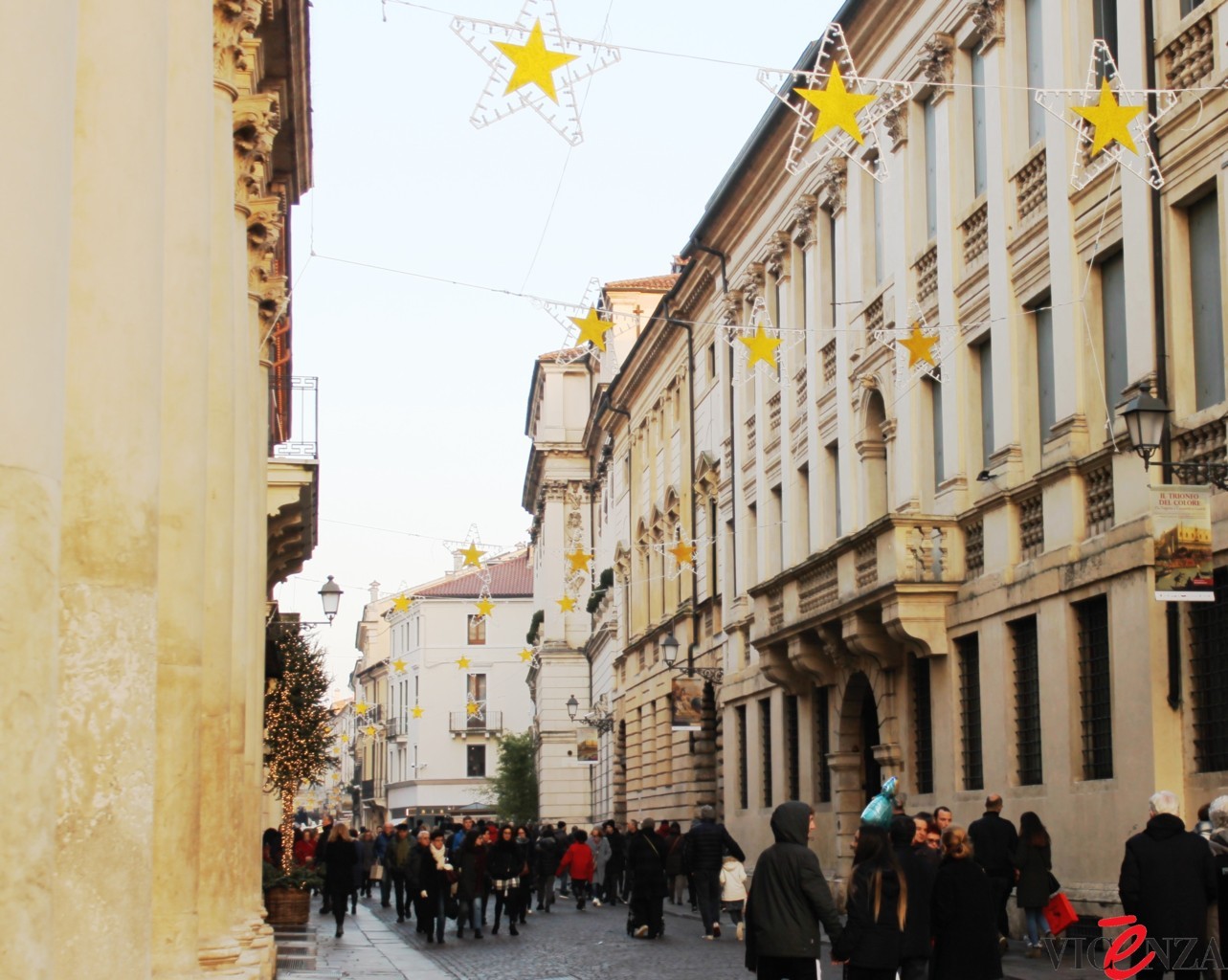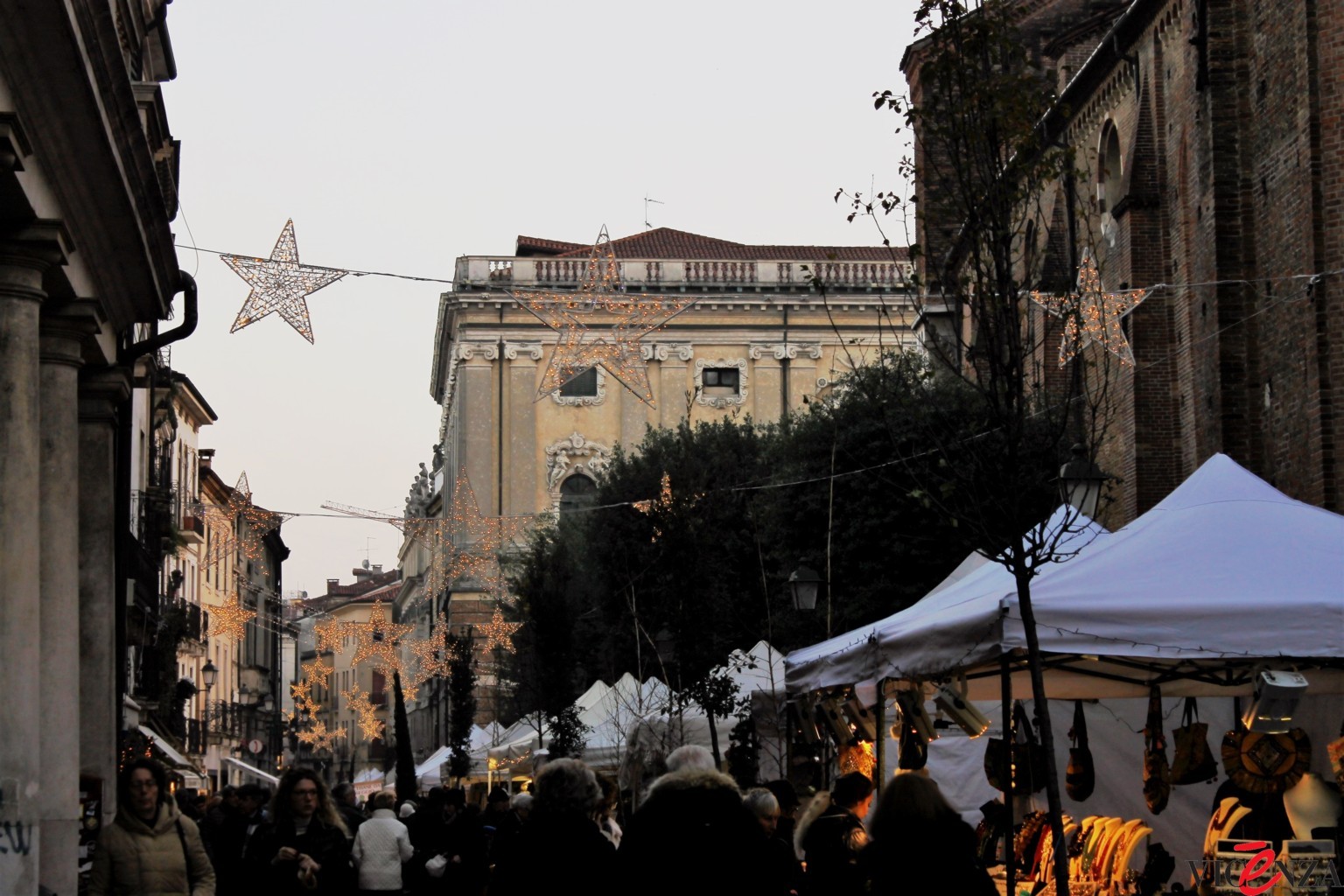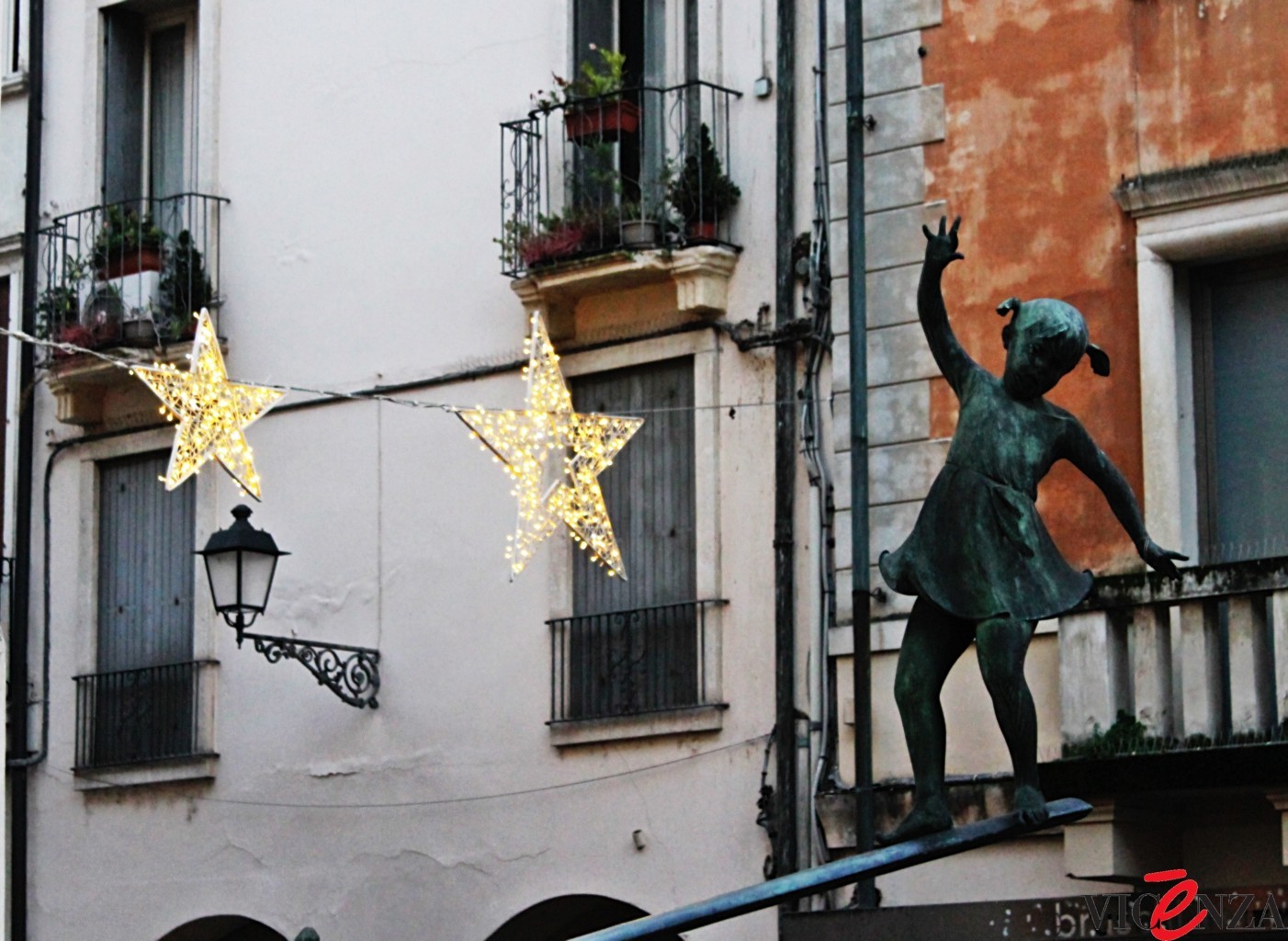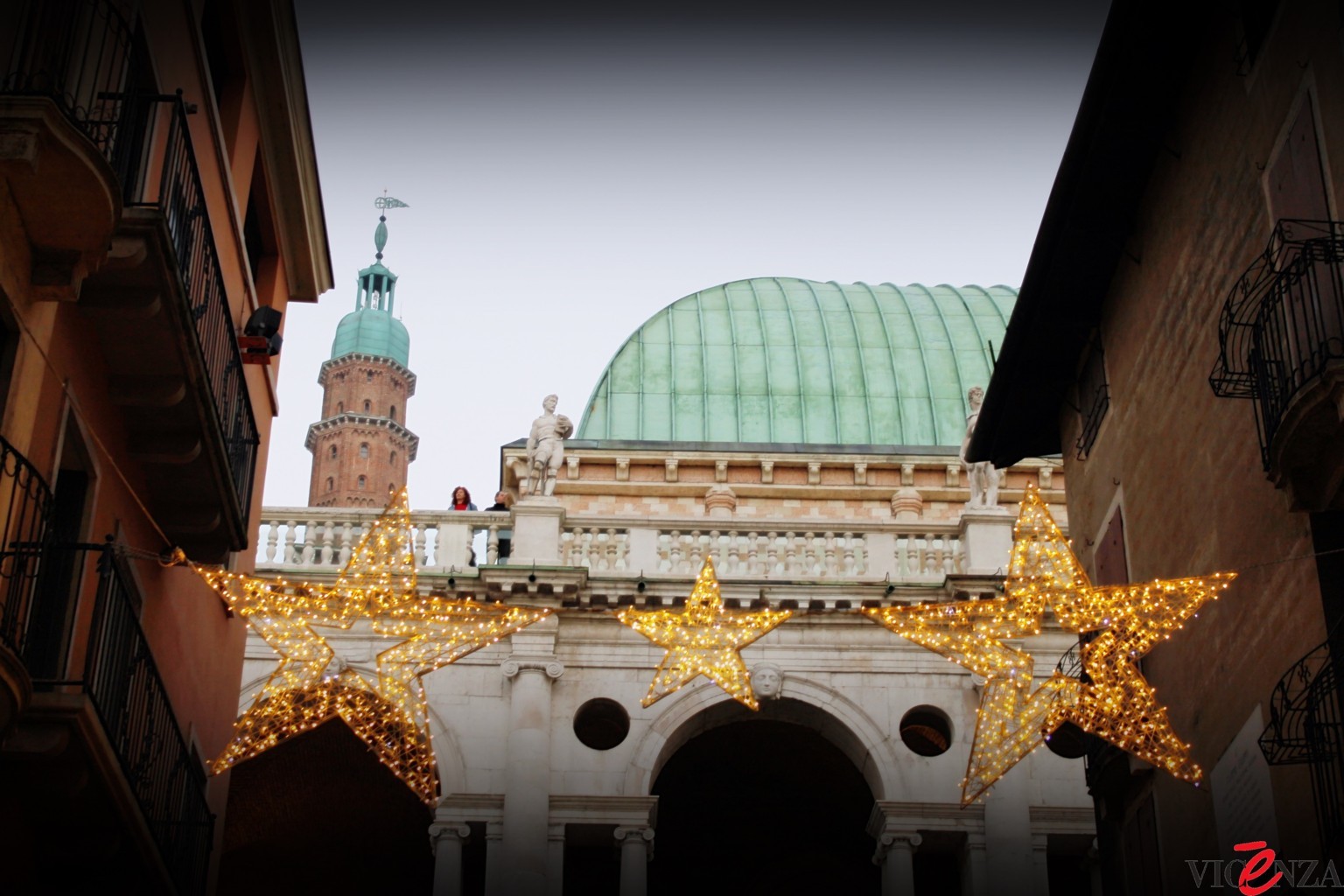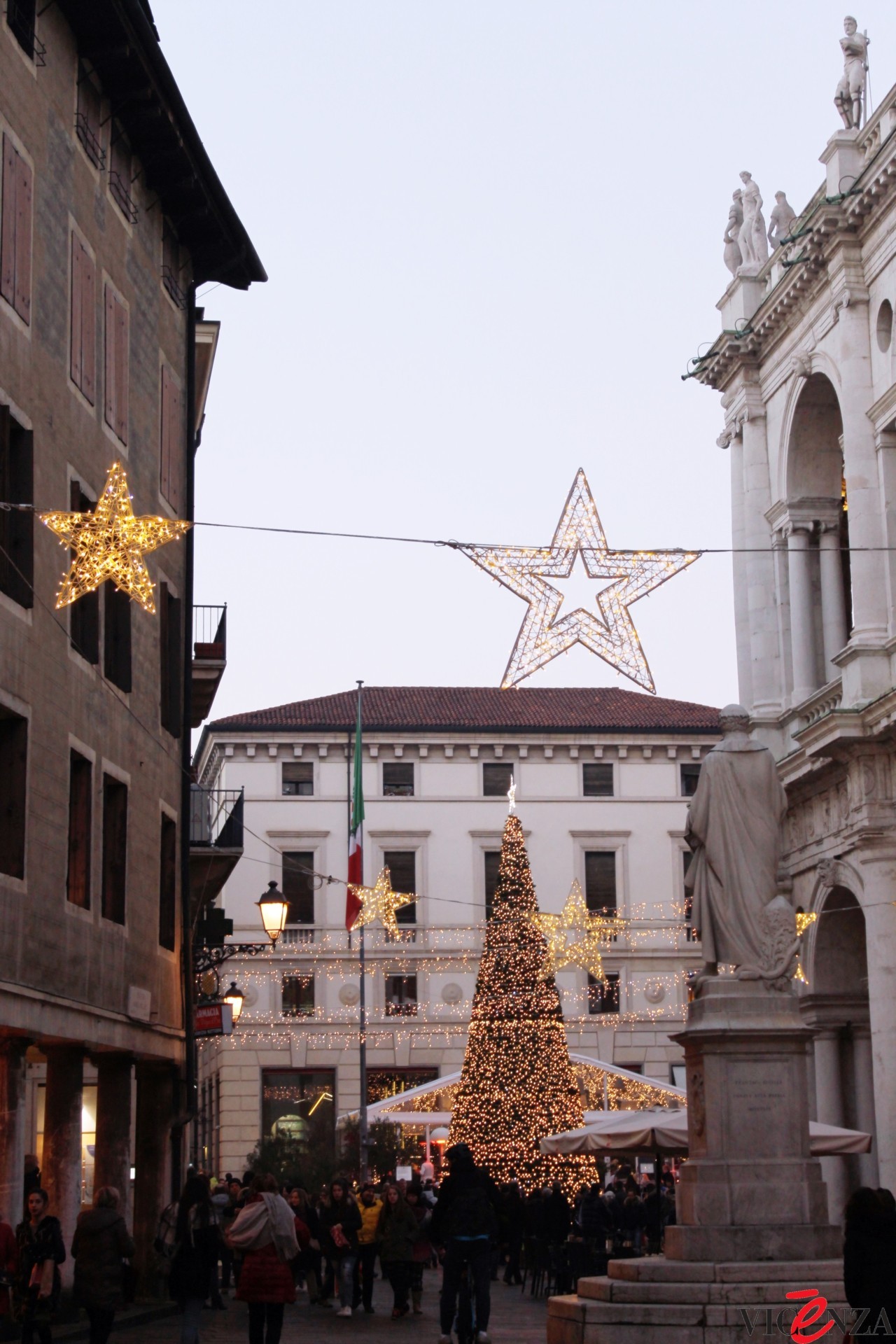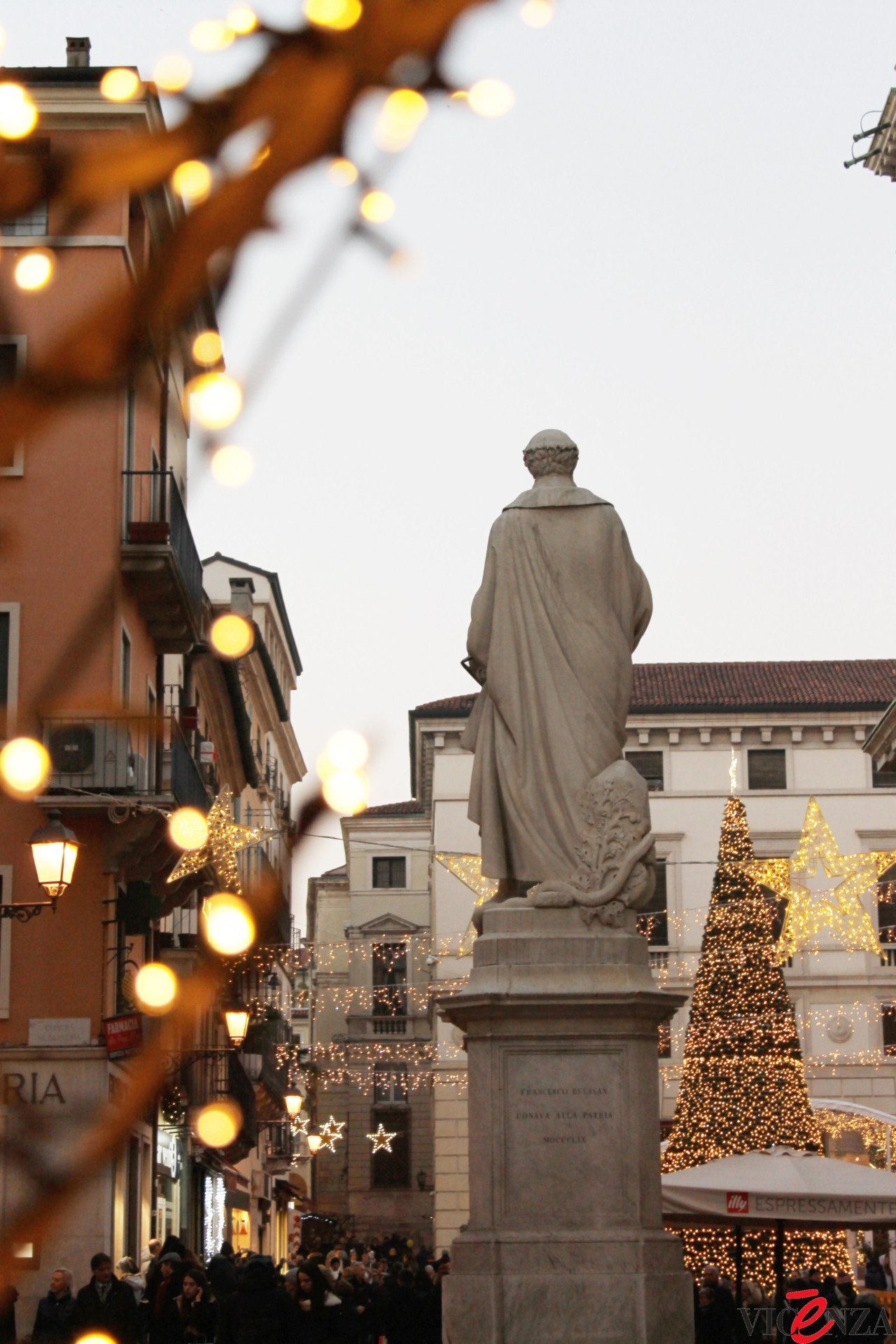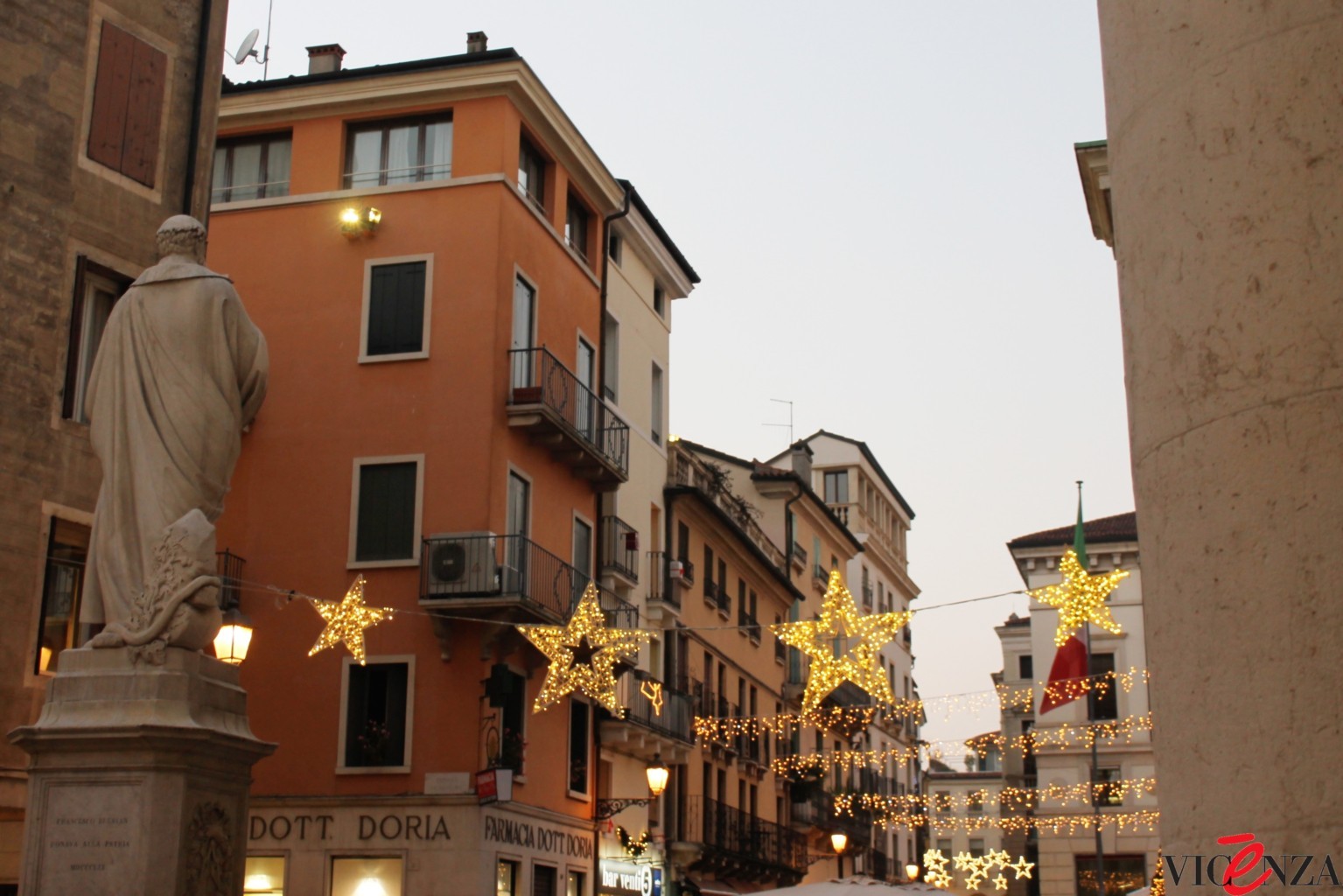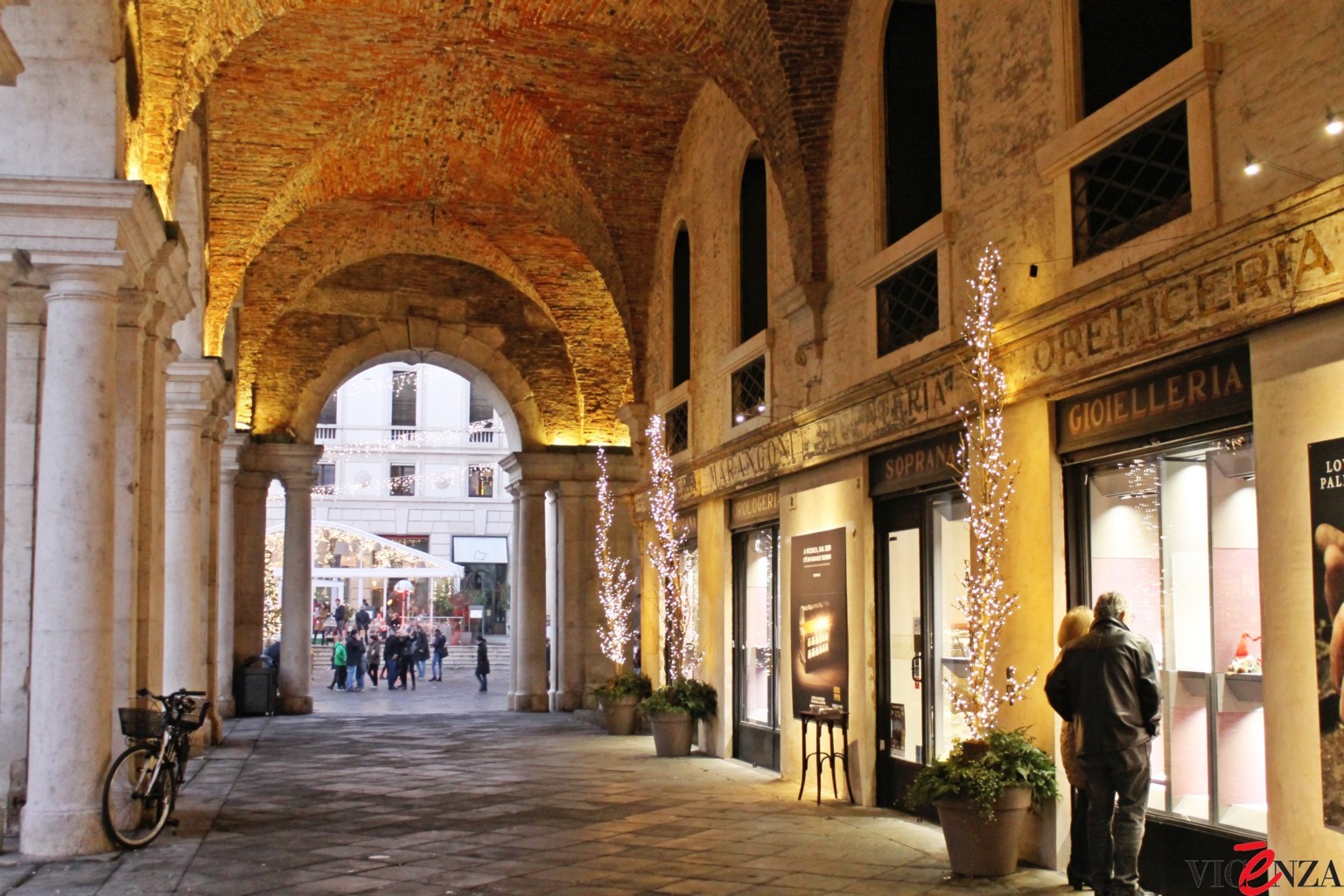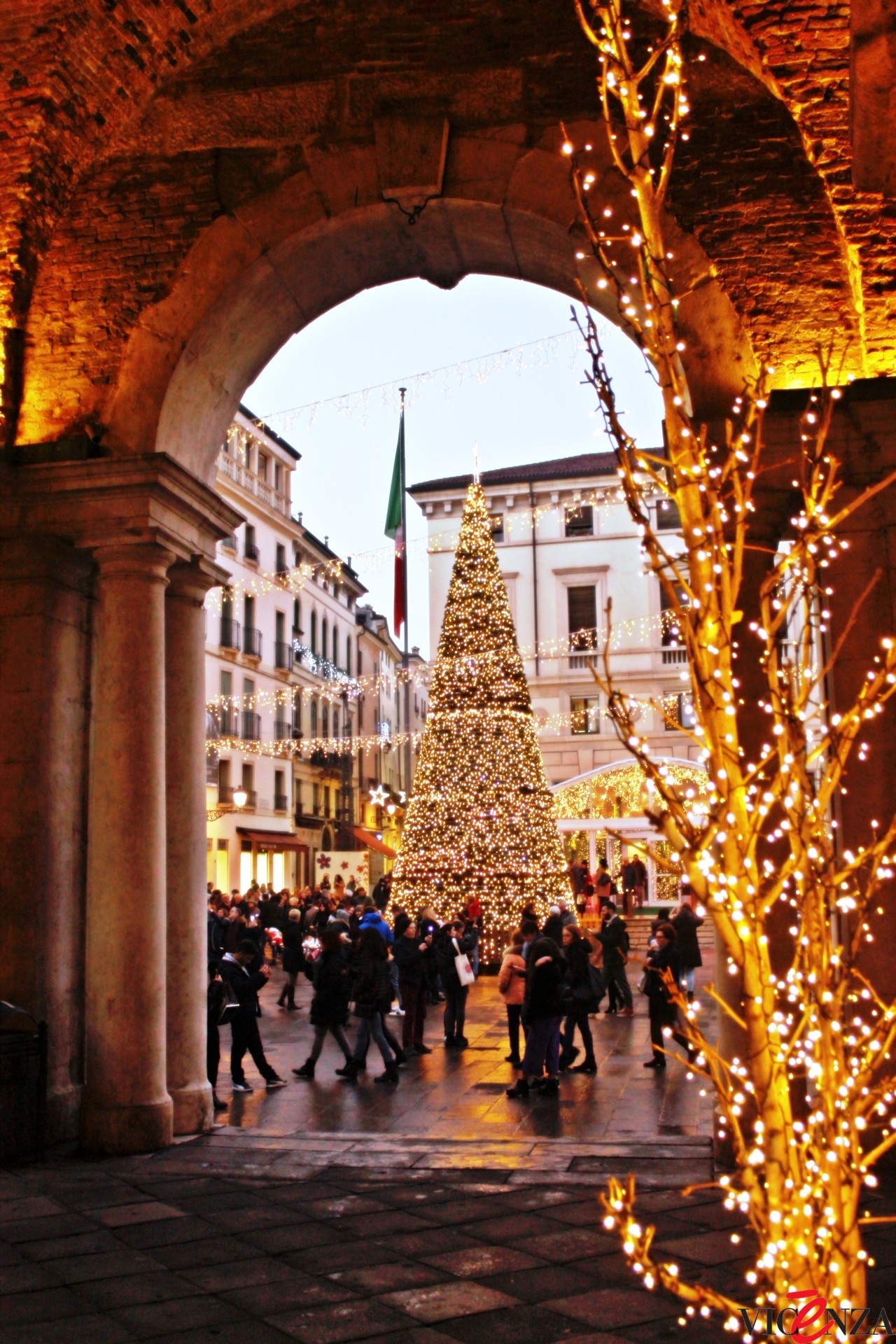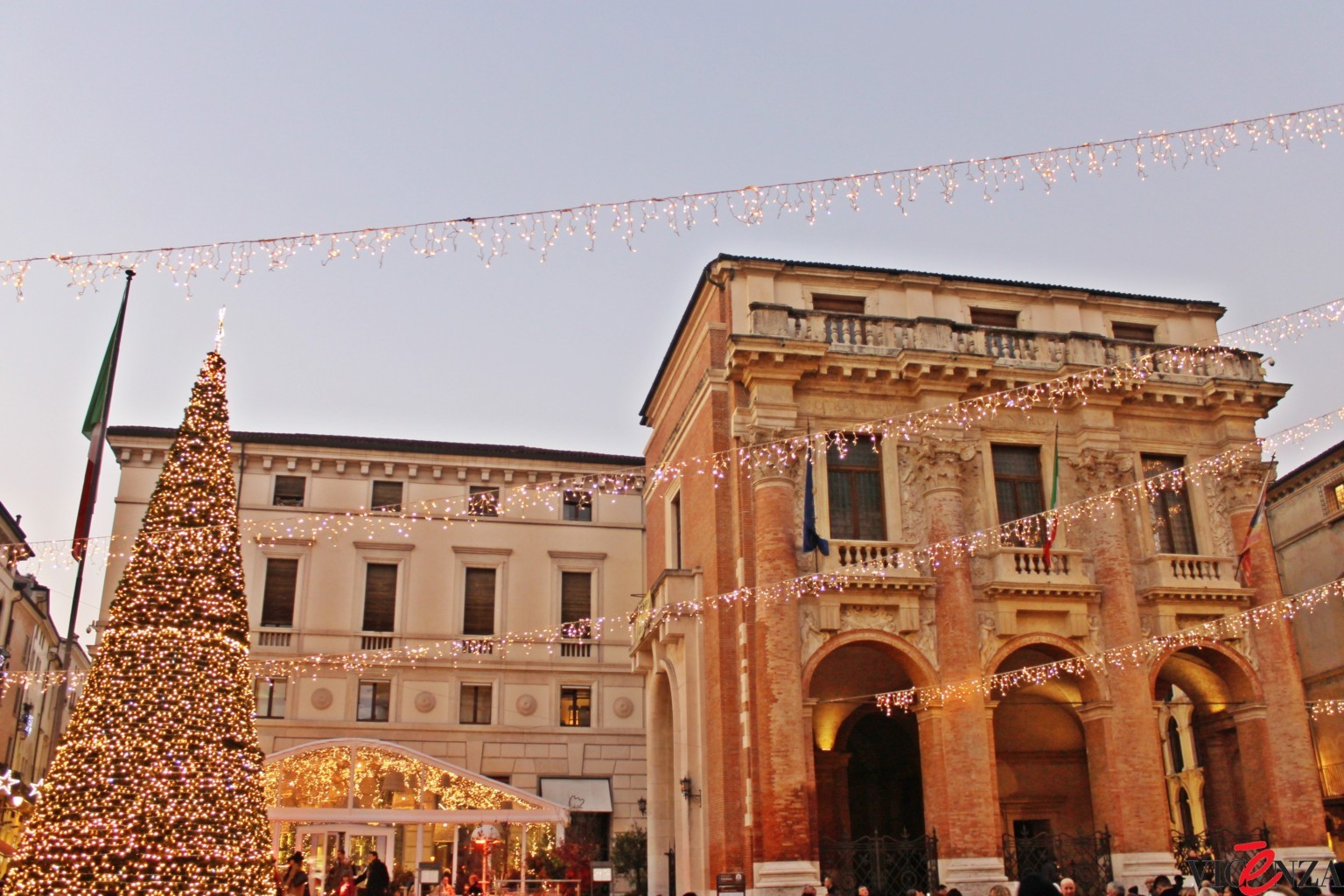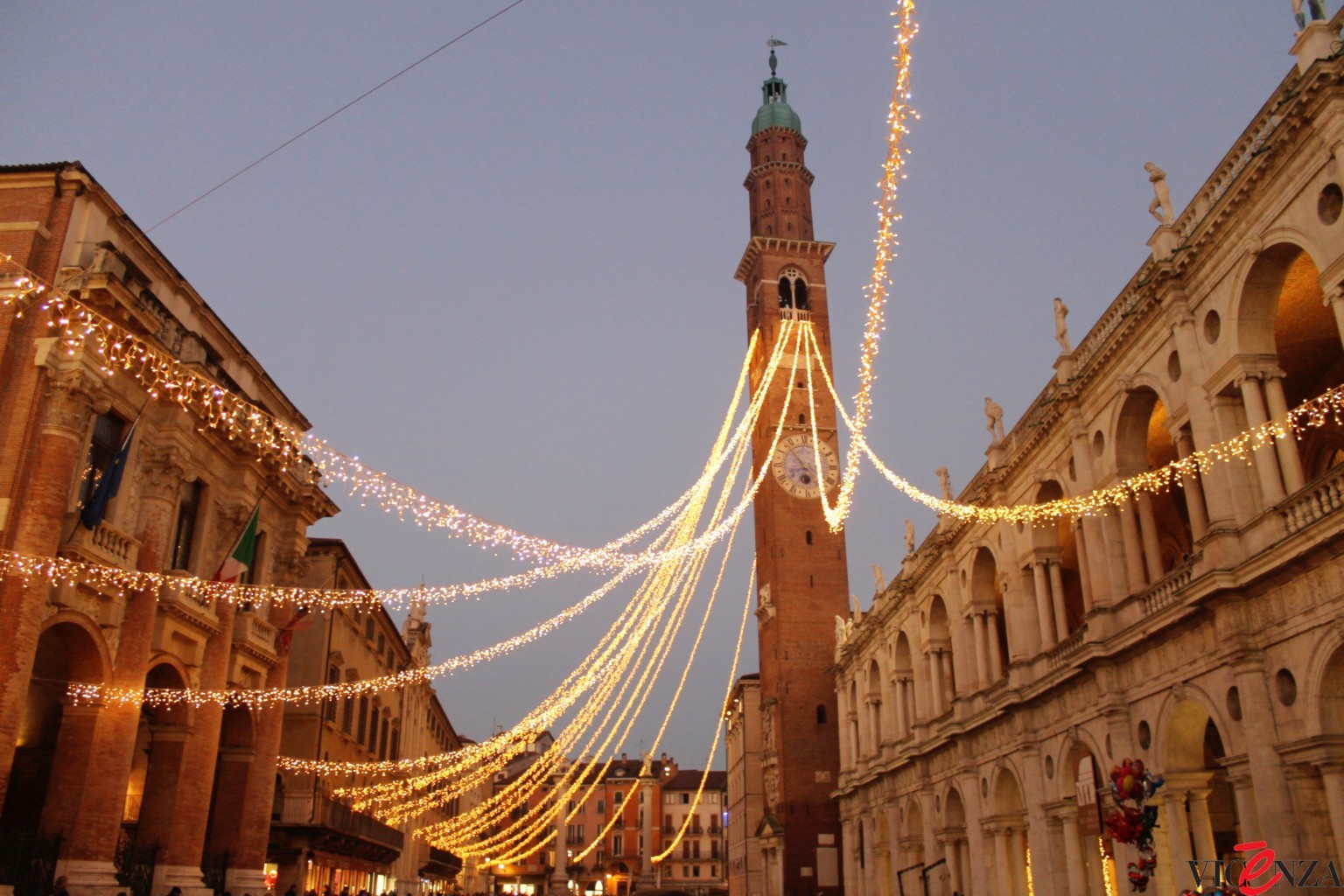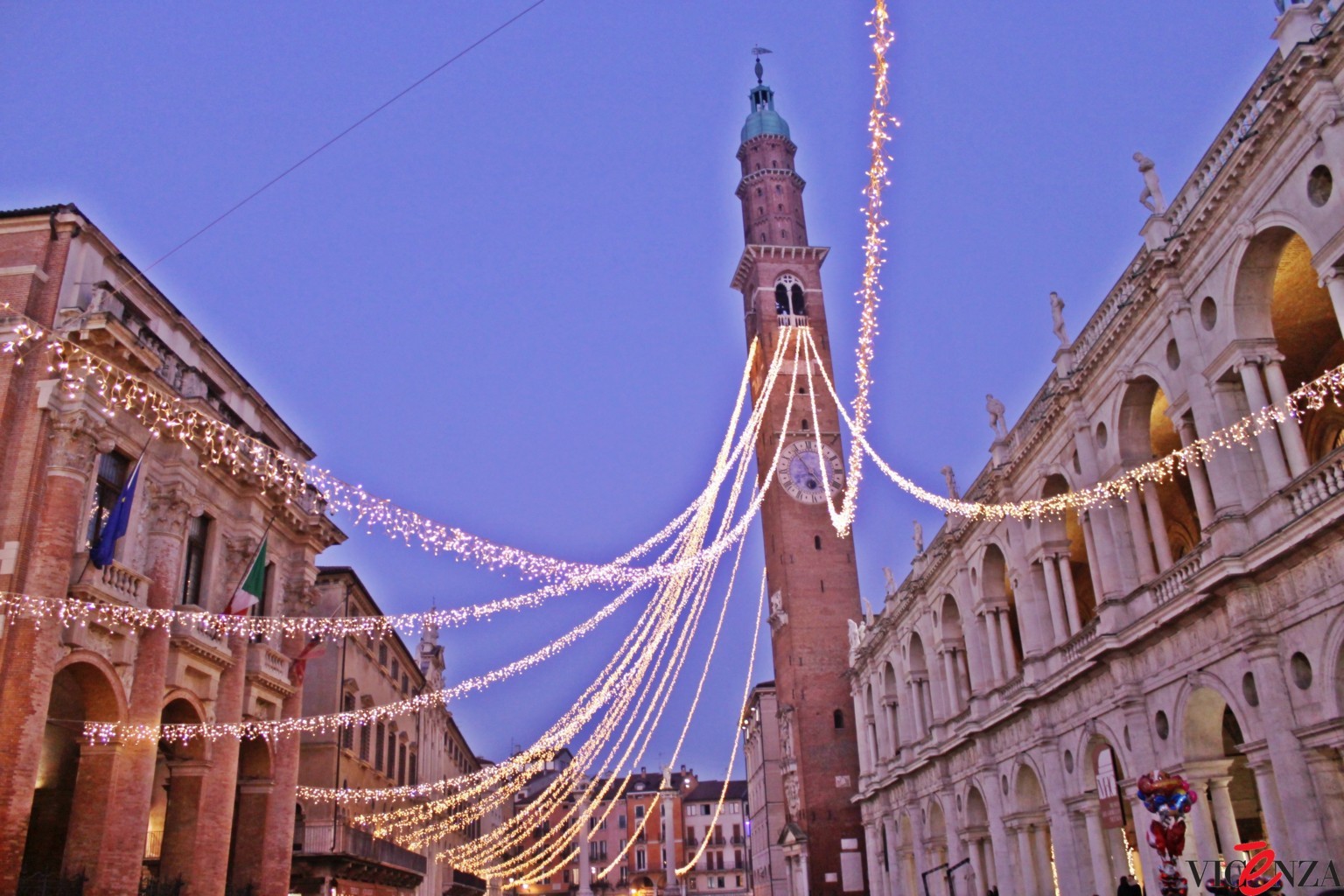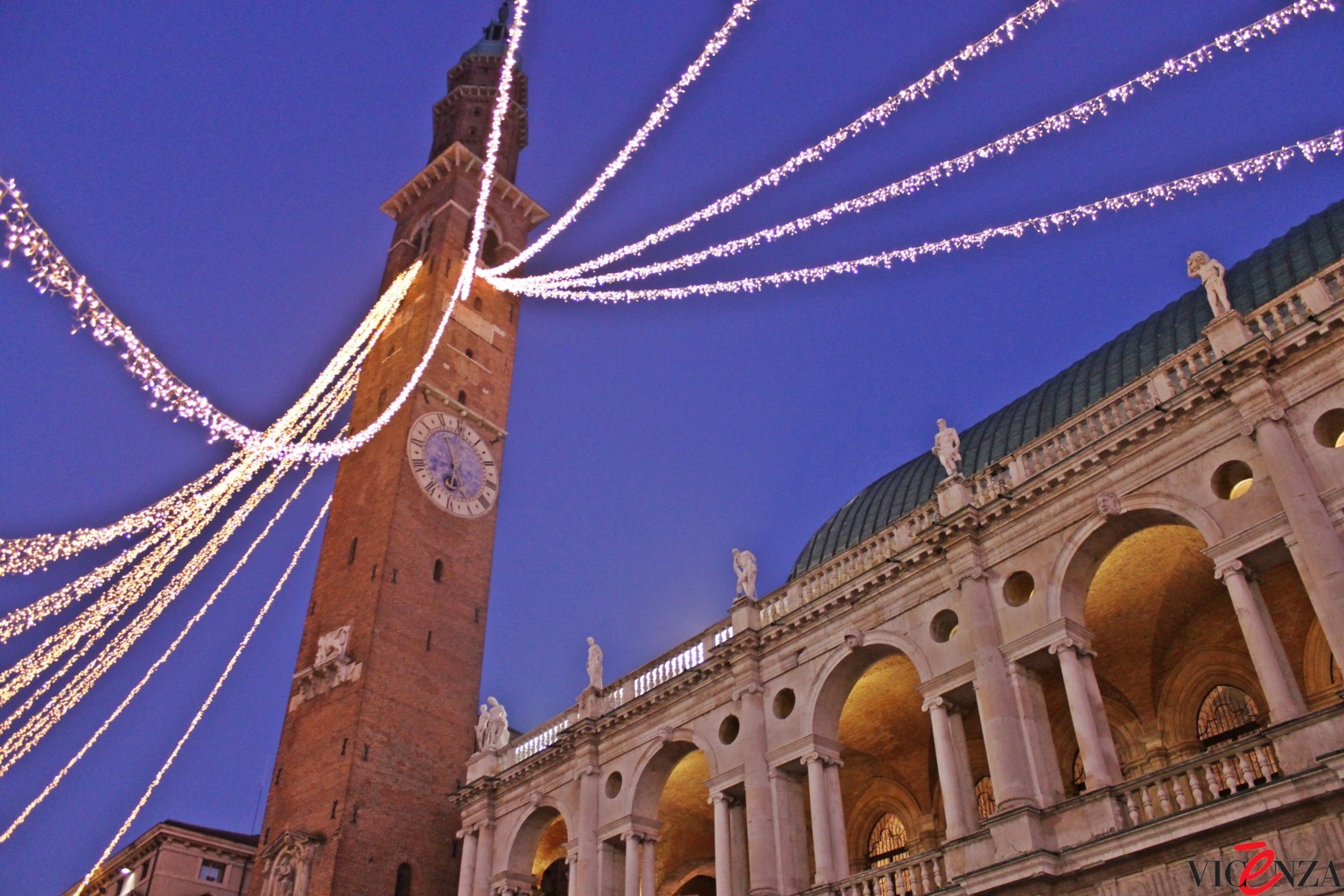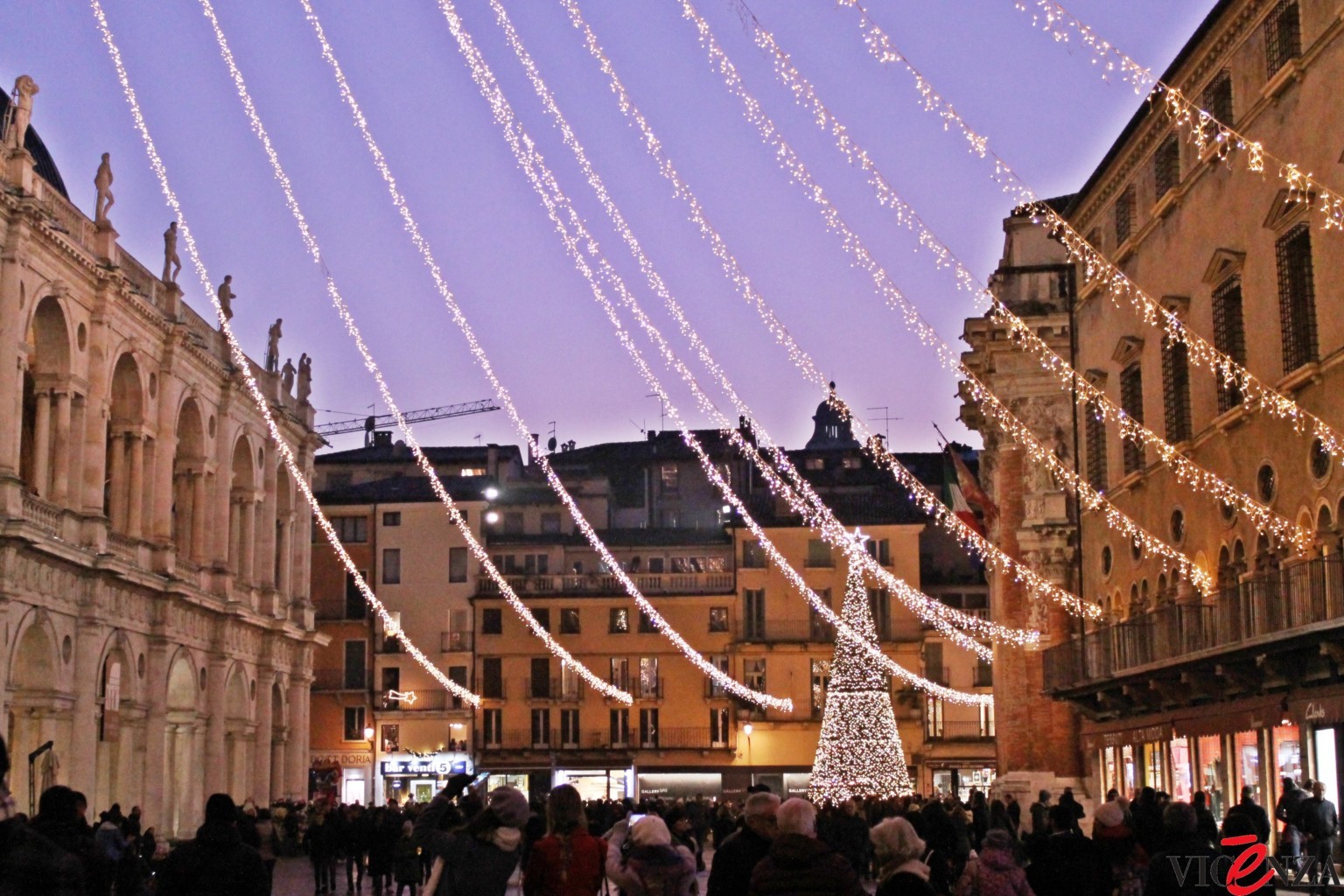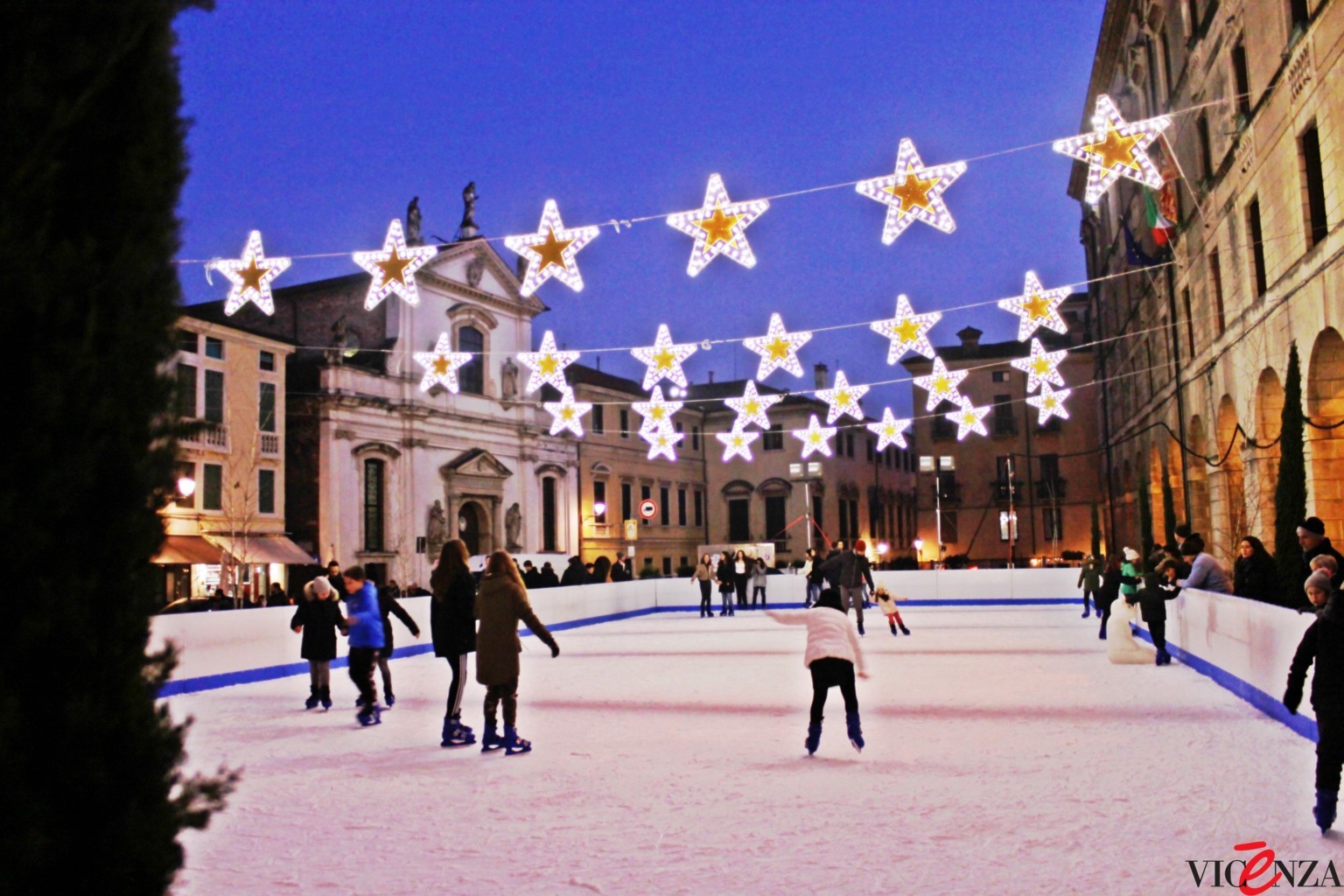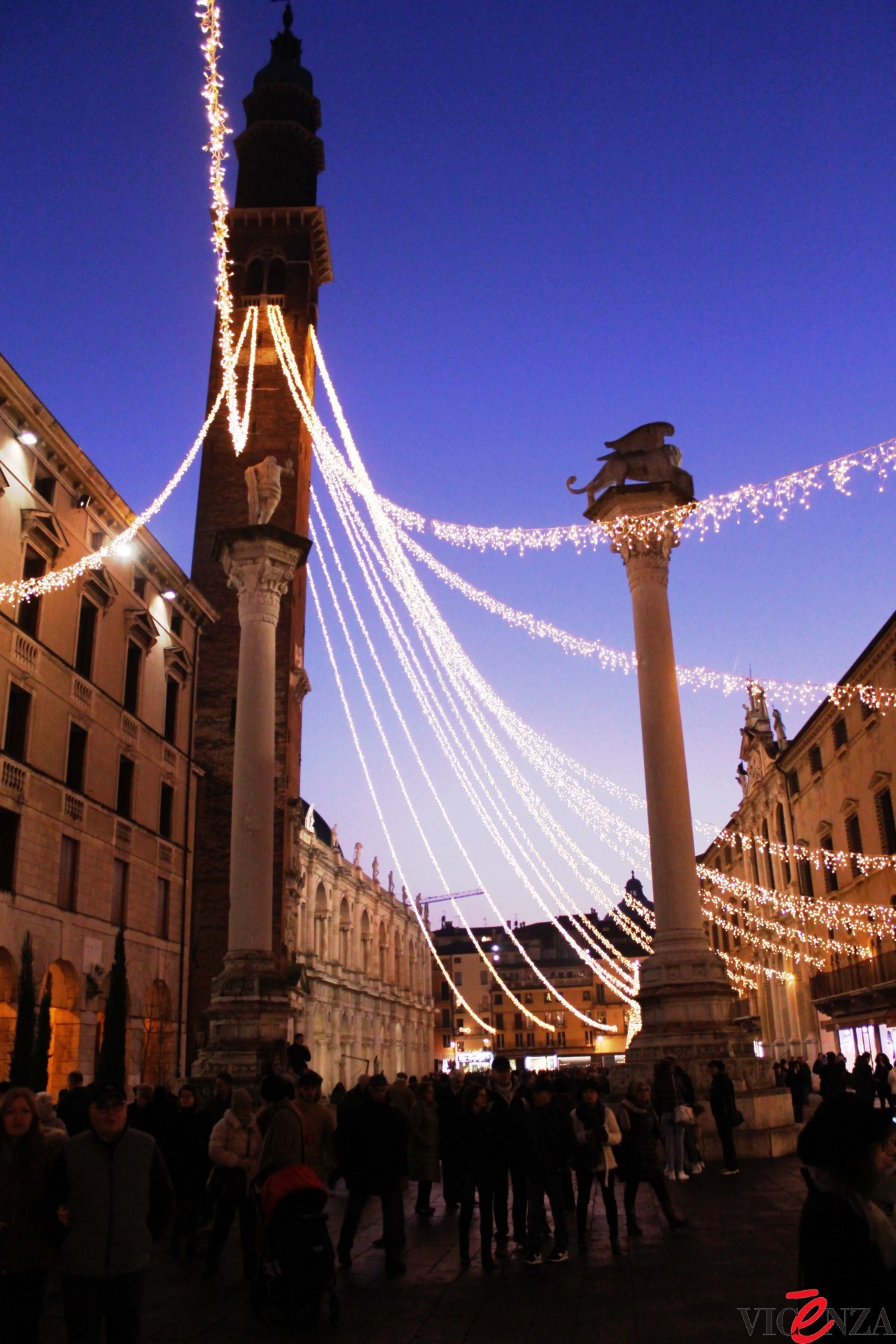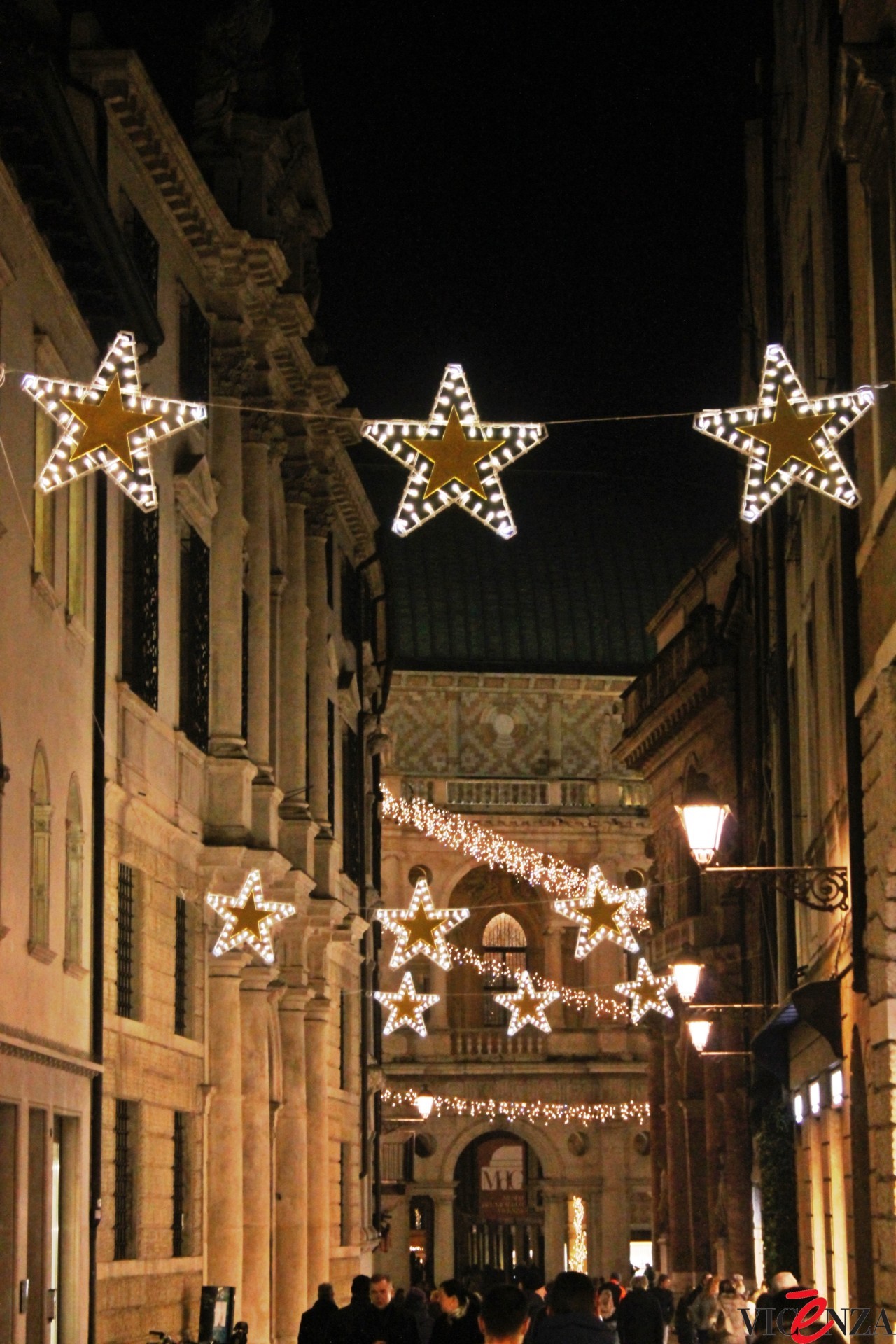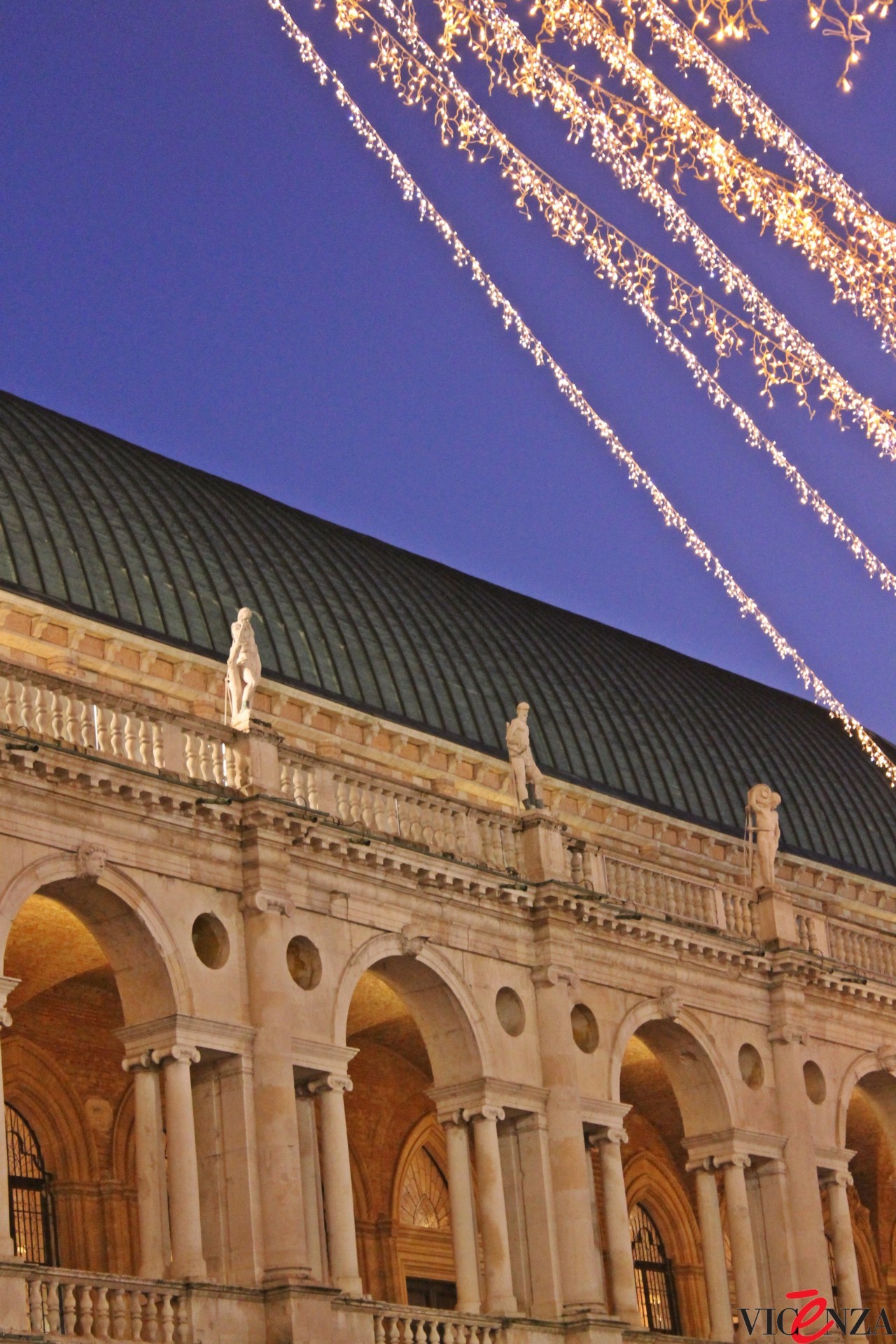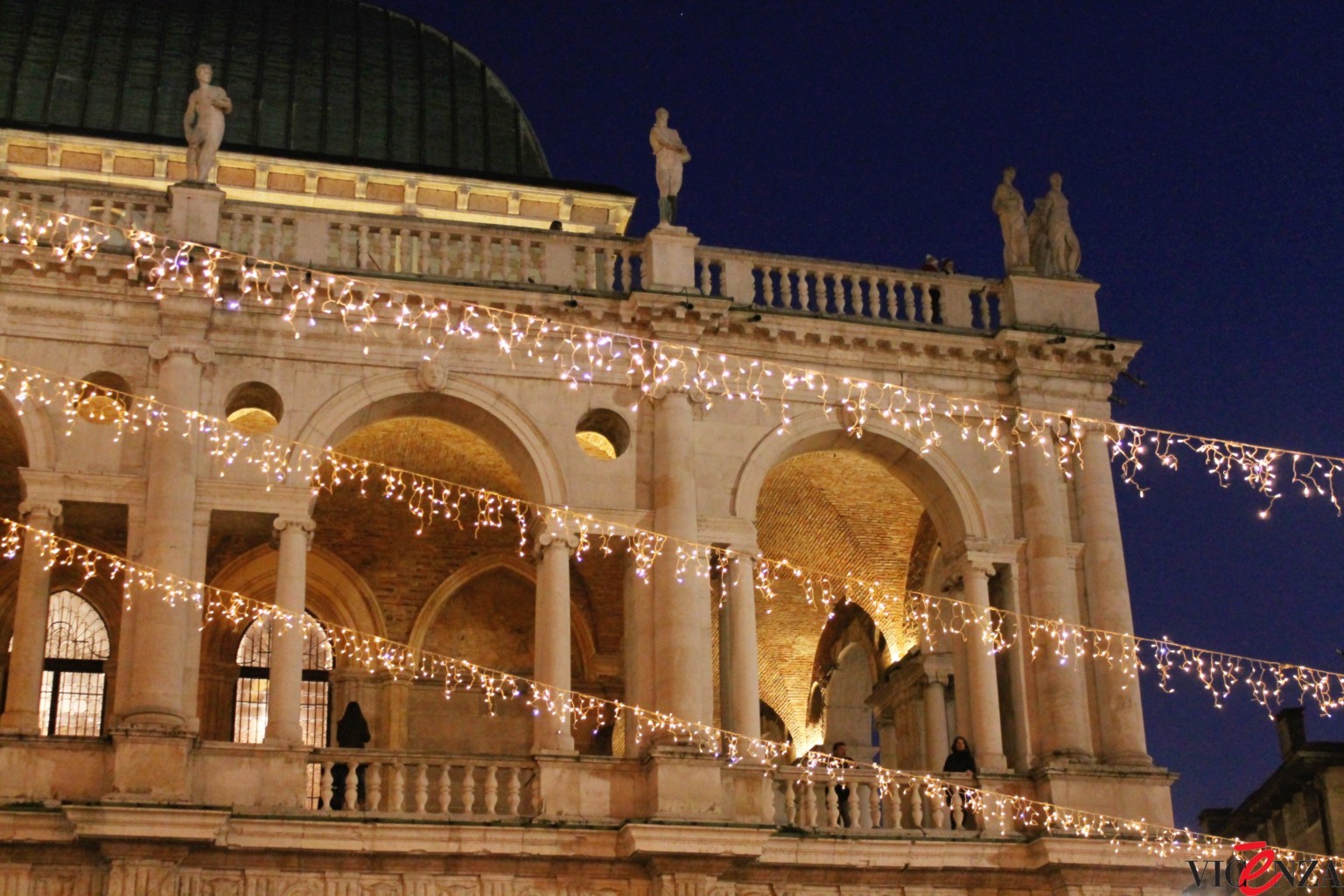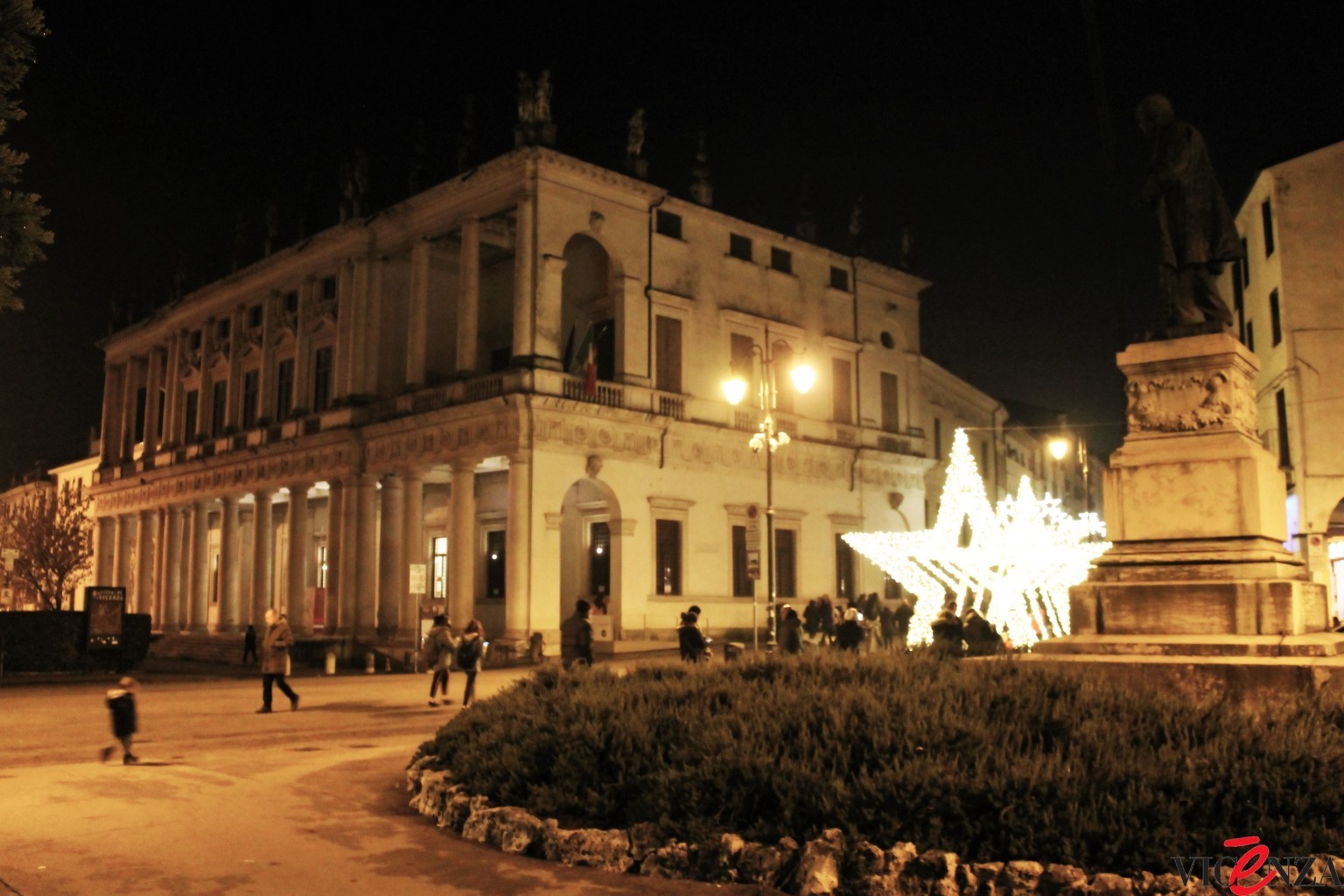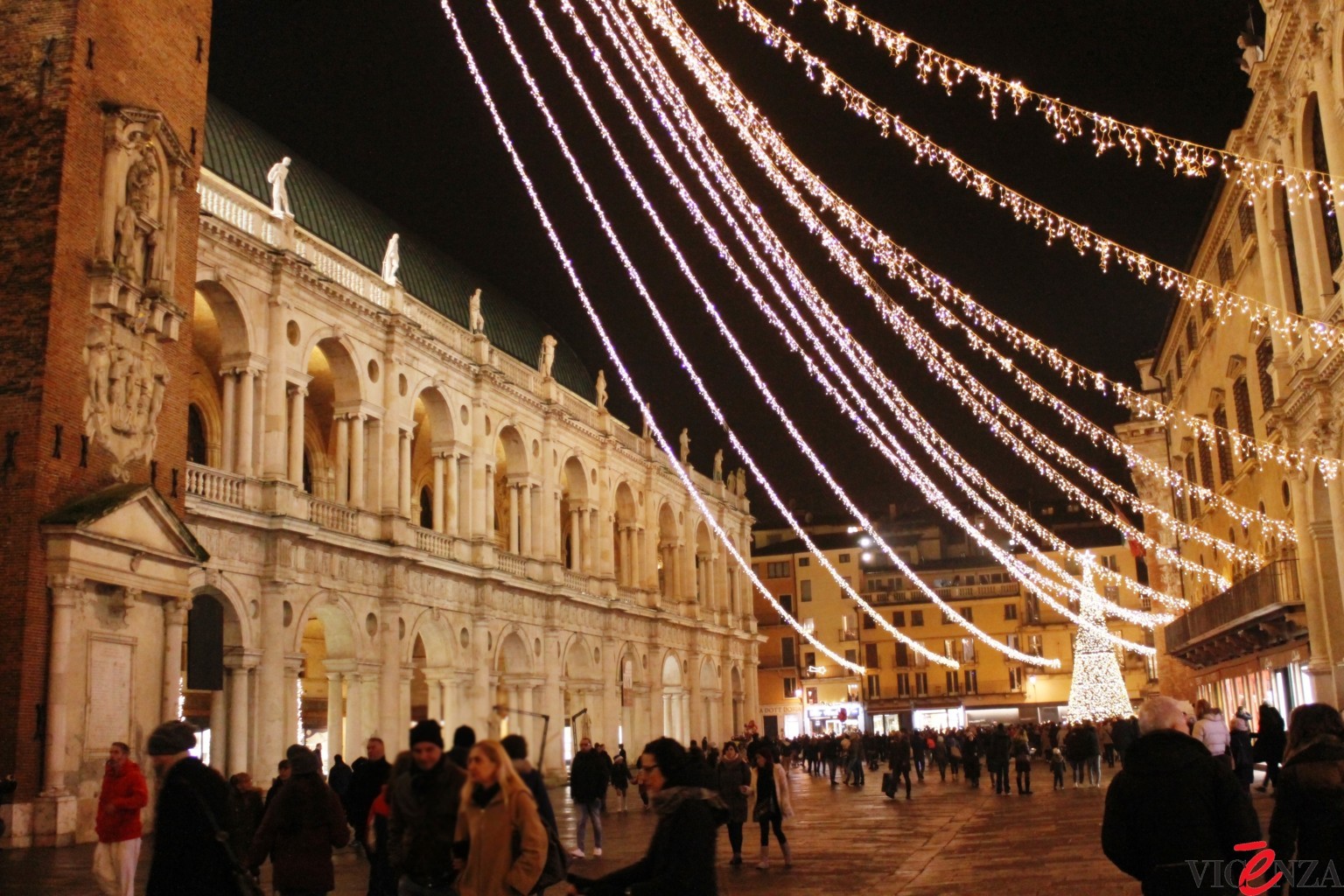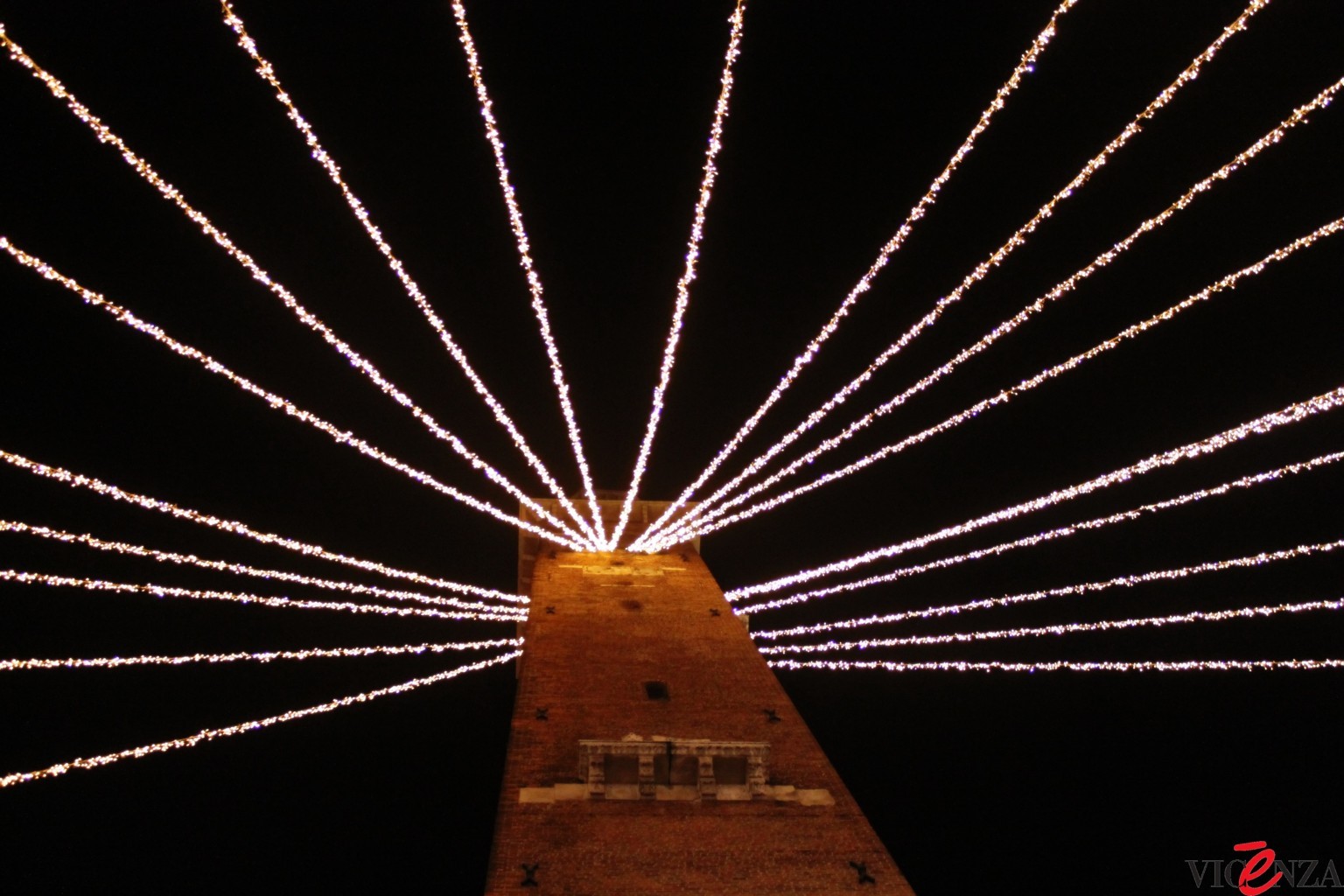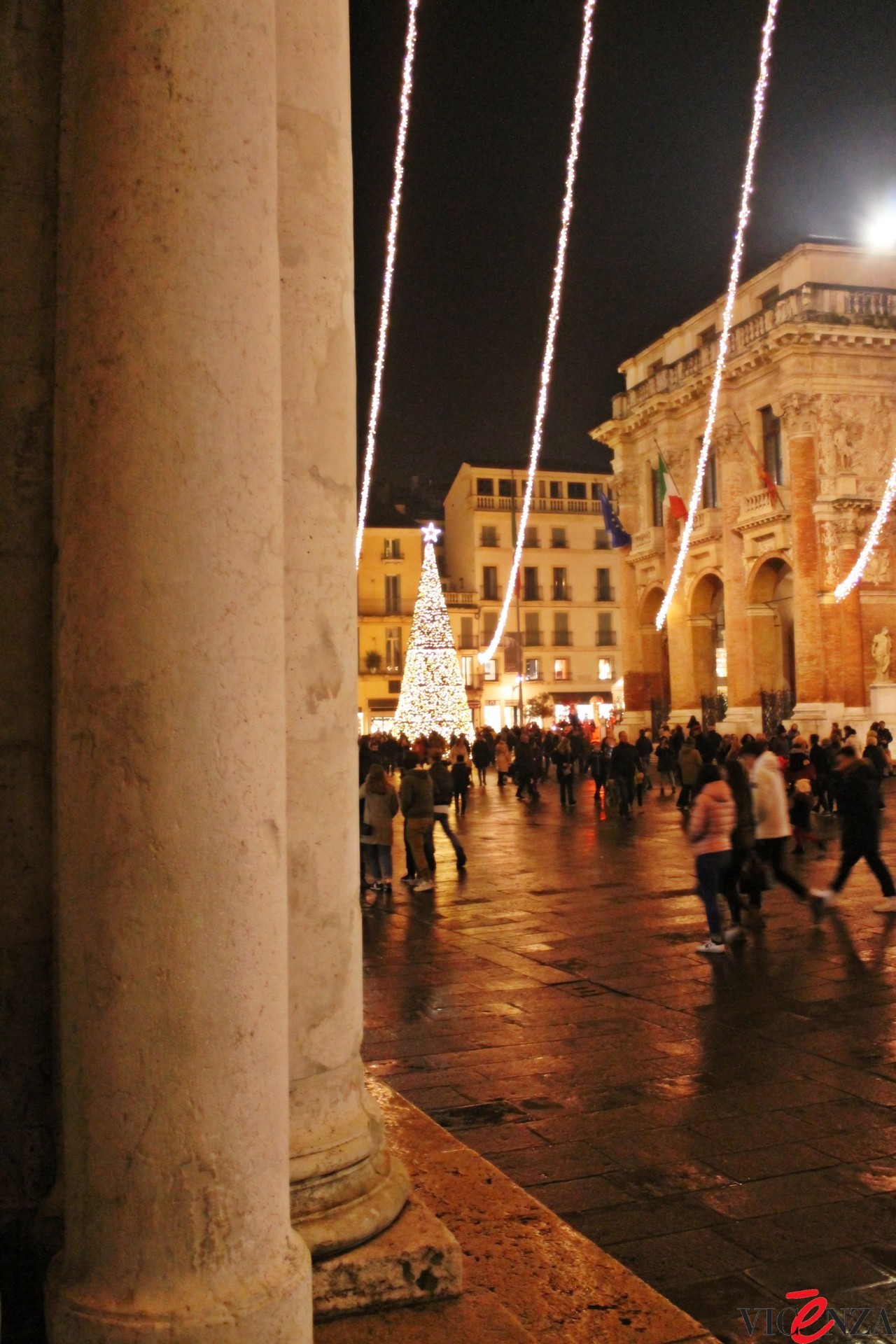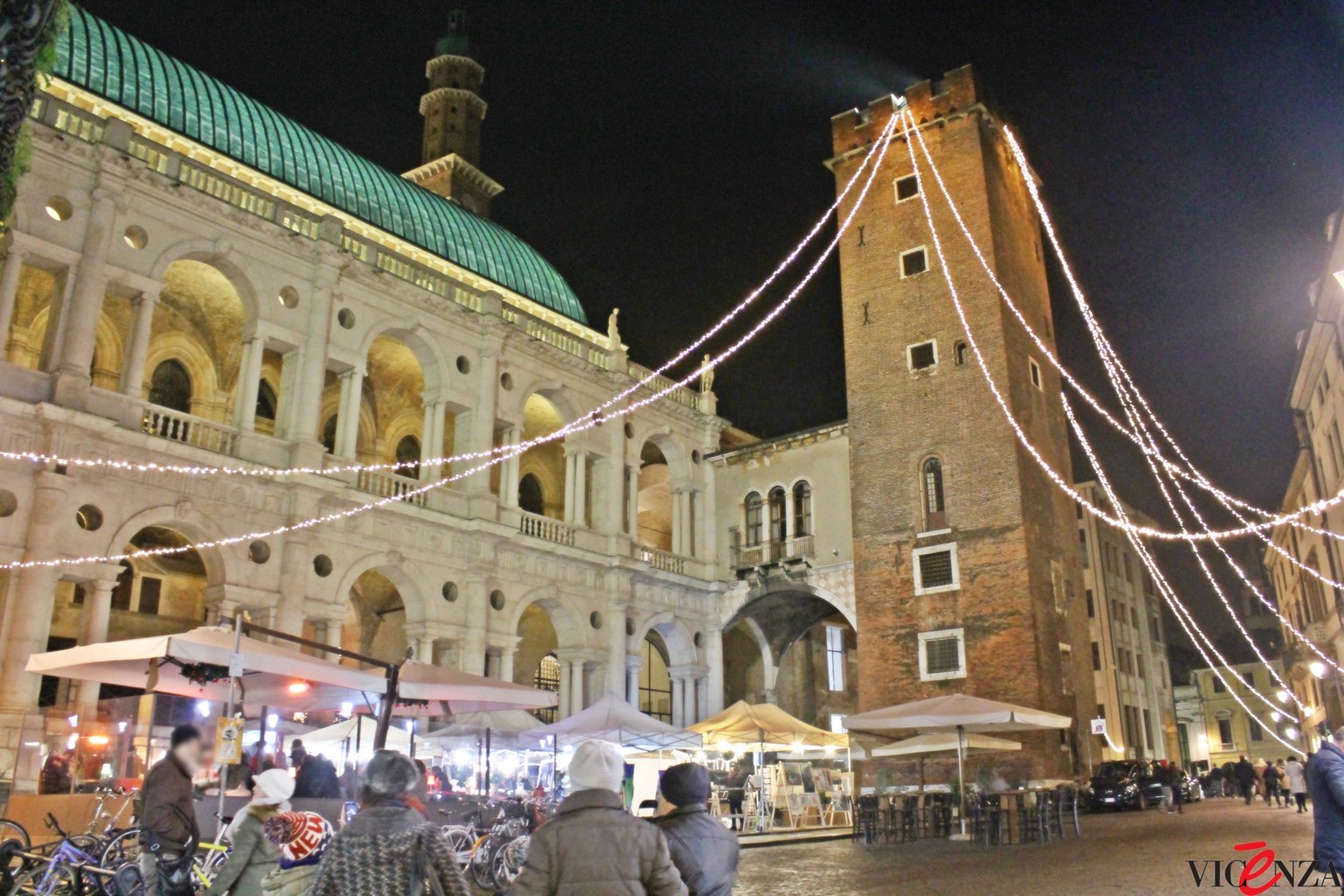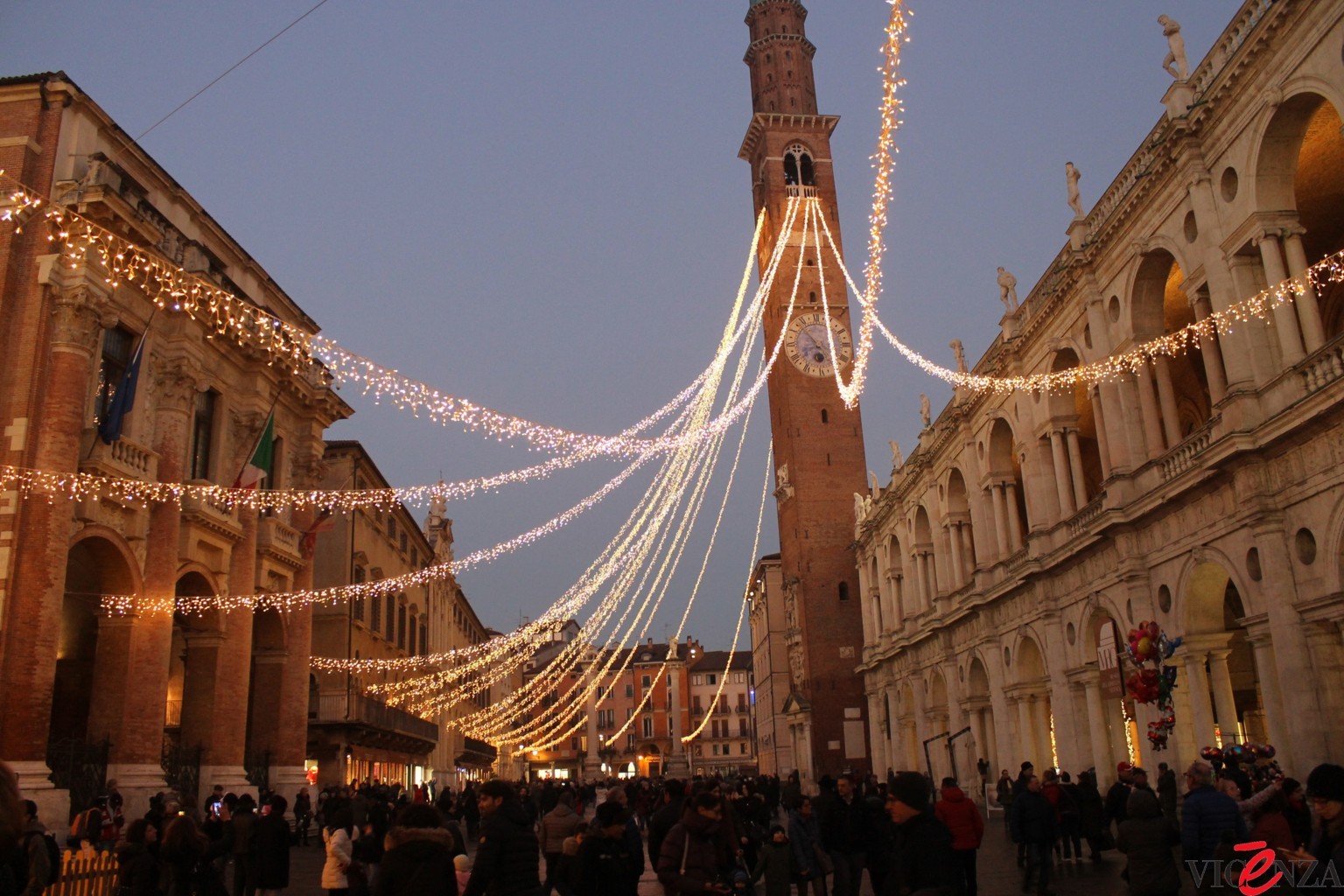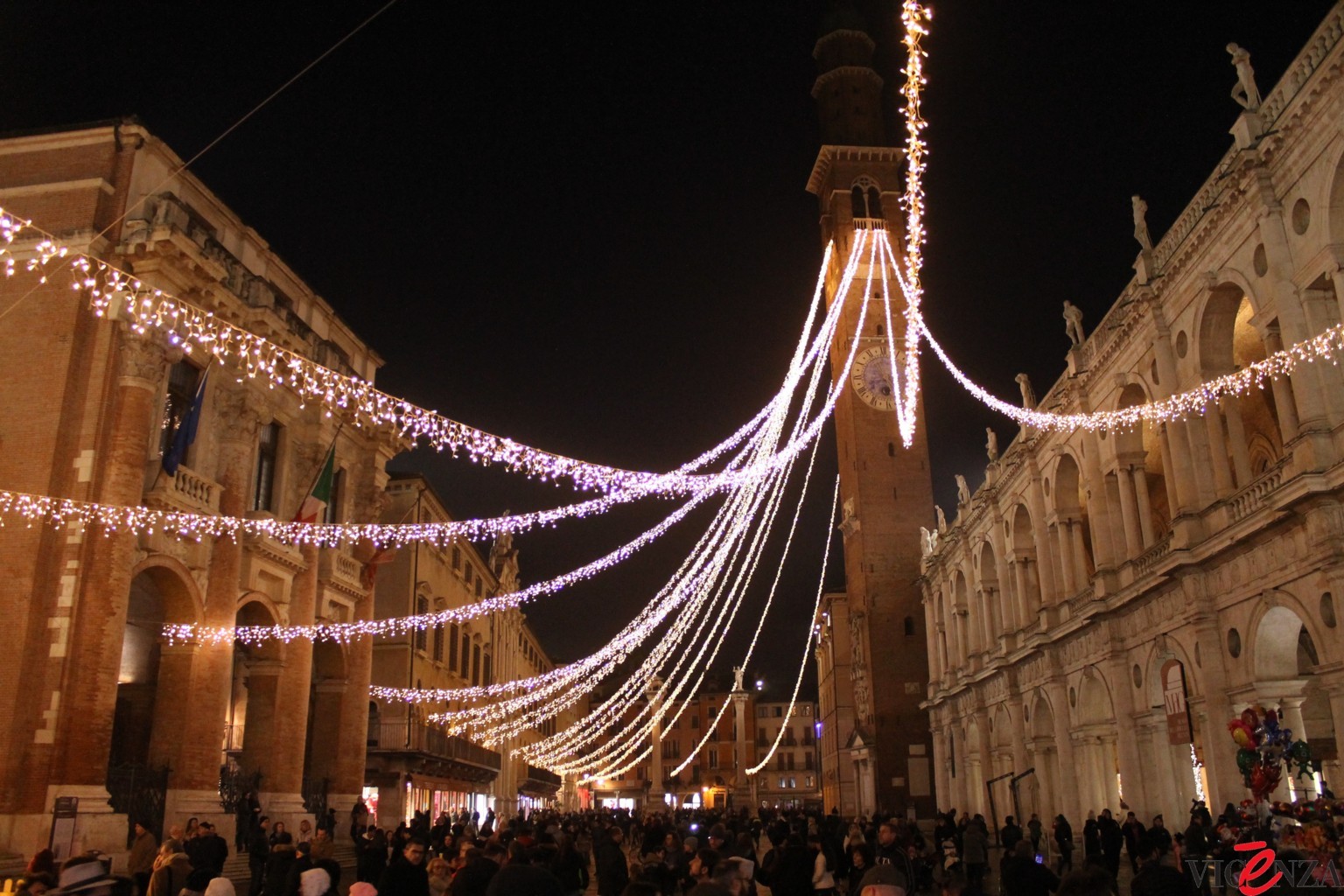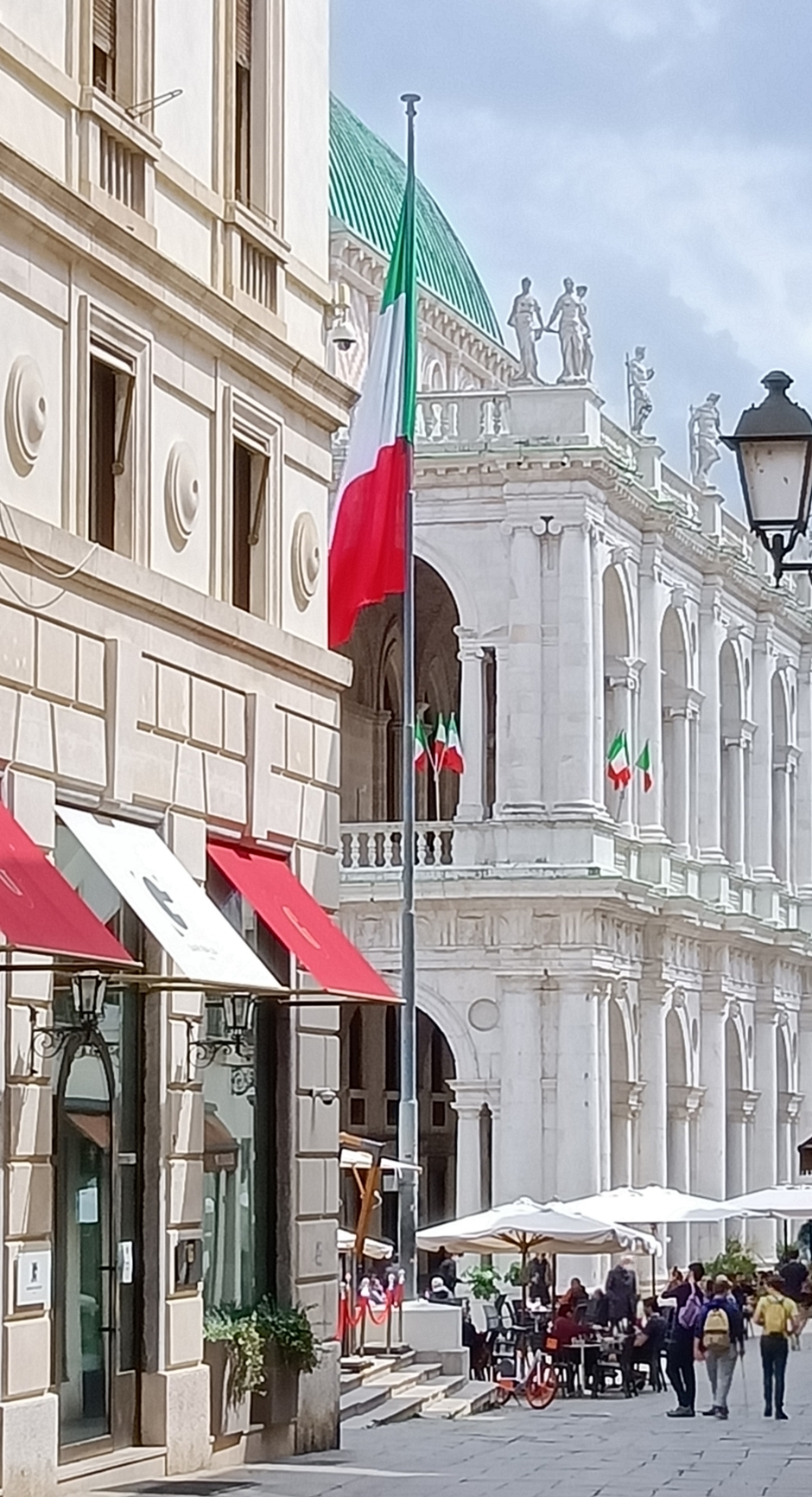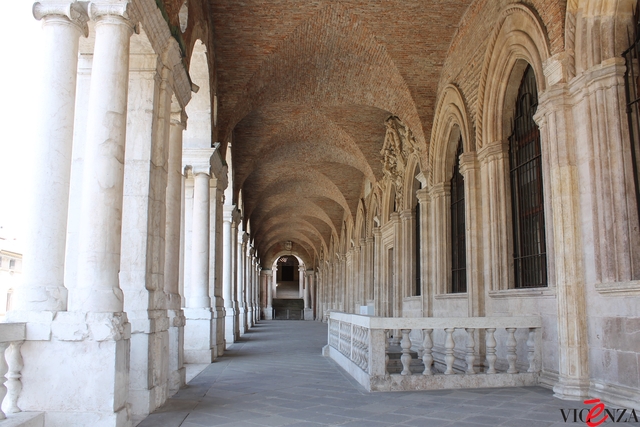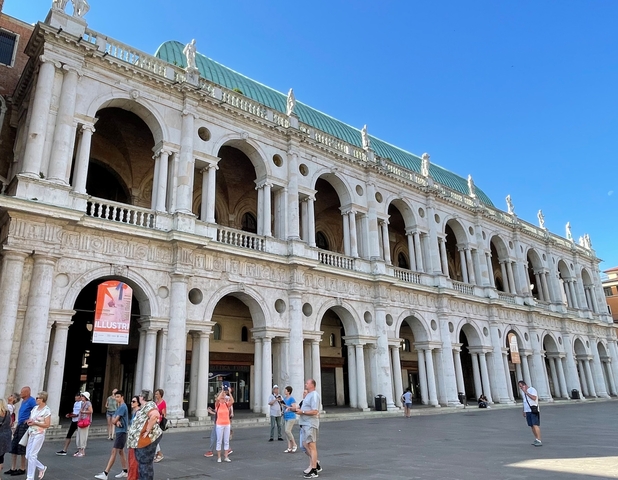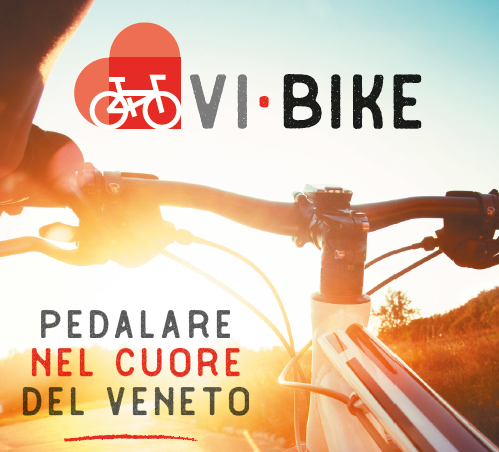From September 2024 the civic museums will close one hour later – at 6 PM instead of 5 PM – adapting the winter timetable (with current closing times at 5 PM) to the summer timetable.

Below, the opening hours in detail starting from 1st September:
- Civic Museum of Palazzo Chiericati, Santa Corona Church, and Palladian Basilica open from Tuesday to Sunday, from 10 AM to 6 PM;
- Galleries of Palazzo Thiene open from Thursday to Sunday, from 10 AM to 6 PM;
- Naturalistic and Archaeological Museum open from Tuesday to Sunday, from 10 AM to 6 PM from September to June, and from 10 AM to 2 PM in July and August;
- Museum of the Risorgimento and Resistance open from Thursday to Sunday, from 10 AM to 5 PM from September to June, and from 10 AM to 2 PM in July and August;
- Finally, the Teatro Olimpico is open from Tuesday to Sunday, from 9 AM to 5 PM from September to June, and from 10 AM to 6 PM in July and August. The opening hours for the Teatro Olimpico will remain unchanged in order to allow rehearsals for shows. ( Changes in the opening times of the Theatre)
CURRENT MONTH: OPENING HOURS
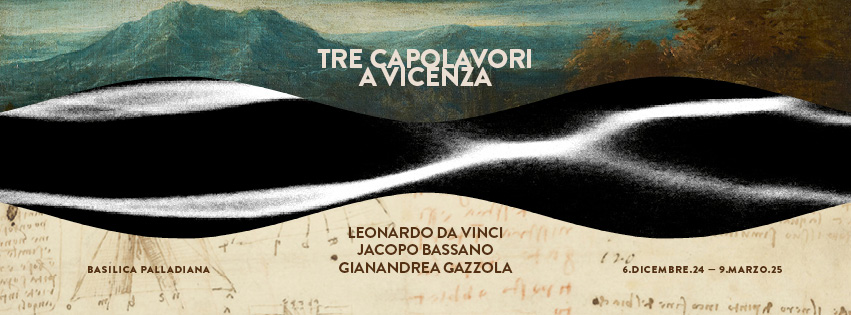
From 6th December 2024 to 9th March 2025
From Tuesday to Sunday: 10 - 18
Every Saturday until 4th January 2025: 10 - 20
Closed on Mondays
Reservation is mandatory for groups and schools only.
Extraordinary openings: the dates
25th December 2024, 15 - 20
30th December 2024, 10 -18
1st January 2025, 15 - 20
6th January 2025, 10 - 18
3rd March 2025, 10 - 18
Extraordinary closures: the dates
The mornings on the 25th December 2024 and the 1st January 2025.
Last entrance 30 minutes before closing time
RESERVATION NOT NEEDED FOR INDIVIDUAL VISITORS.
Tickets can be bought at the ticket office inside the Palladian Basilica.
TICKETS
€ 6 full price
€ 4 reduced
€ 2 for schools
Free entrance for residents in Vicenza or the Vicenza Province ( via ID check at the entrance)
Tourists can visit the exhibition with either the single ticket to the Basilica Palladiana, the 4 Museums Card or the Vicenza card.
People with disabilities can easily access the first floor by taking the lift.
Reservation is mandatory for GROUPS and SCHOOLS, by sending an email to bThis email address is being protected from spambots. You need JavaScript enabled to view it.
The majestic hall of the Palladian Basilica, symbol of Vicenza and UNESCO heritage since 1994, becomes an exceptional stage, a real theatre where a meeting between three great artists from different eras is staged: the studies and drawings of Leonardo da Vinci (1452-1519), Jacopo da Bassano’s altarpiece "L'alluvione del Colmeda" (Colmeda flood, 1510-1592), the unprecedented and spectacular site-specific installation by Gianandrea Gazzola (class 1948).
The exhibition event Tre Capolavori a Vicenza. Leonardo da Vinci, Jacopo Bassano, Gianandrea Gazzola was created and promoted by the Municipality of Vicenza with the co-organization of Intesa Sanpaolo and curated by Guido Beltramini, director of the Palladio Museum.
Just like last year’s exhibition Tre Capolavori a Vicenza. Caravaggio, Van Dyck e Sassolino was dedicated to the reflection on the experience of time, this year the curator Beltramini has created a dialogue through the centuries between three artists on the concept of nature, focused on an essential and precious element, at the base of human life: water.
www.mostreinbasilica.it
The temporary exhibition "La Caduta degli angeli ribelli. Francesco Bertos" (The Fall of the Rebel Angels. Francesco Bertos) at the Gallerie d’Italia – Vicenza: from 7th January 2025 people can get a reduced admission by showing the ticket to the Palladian Basilica at their ticket office. The exhibition is free for residents of the province of Vicenza from 6th December 2024 to 6th January 2025.
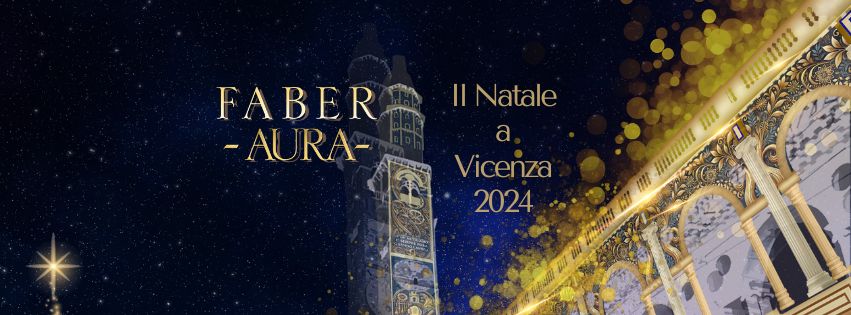
MARKETS, LIGHTS & EVENTS
Christmas lights
The Christmas activities will officially begin on Friday 29th November in Piazza dei Signori, at 17.30, with the ehibition of a choir of students from the school music departments.
The videomapping
The videomapping show titled "Faber Aura" is scheduled at specific hours of the day and will light up the facades of the palazzos in Piazza dei SIgnori until 6th January 2025:
- from Sunday to Thursday, from 17.15 till 23.00
- Friday and Saturday, from 17.15 till 00.00
Moreover, at the beginning of every hour and every half an hour a videoshow and background music will animate the square for 8 minutes.
“Faber Aura” evokes the essence of craftsmanship as art that permeates the very soul of Vicenza. “Faber” is the artisan, the maker that gives shape to the matter, while “Aura” suggests the atmosphere of beauty and artistry enshrouding the city.
The square set-up will be completed by a natural, 17-metre-tall Christmas tree, decorated with bright, warm LED lights.
The traditional cascade of lights, a must during the Christmas period, will be set up in Piazza delle Erbe, in Corte dei Bissari, in Piazza Biade, Piazza Matteotti, Piazza Castello, Piazza San Lorenzo and in Piazzale De Gasperi. A luminous sphere set in Piazza Matteotti makes it for the perfect location to take Christmas selfies. Light crossings and ground installations will also be placed along the streets, in green areas and roundabouts close to the city centre.
The traditional wooden chalet markets are also returning to the city from 29th November to 1st January with Christmas items, accessories, clothing, regional products and handicrafts.
- The Christmas Village can be found in piazza Biade and in corso Fogazzaro with its characteristic wooden houses. It will be open from Monday to Thursday from 10 to 19, Friday, Saturday and pre-holidays from 10 to 21, on Sunday, 25th December and 1st January from 10 to 20.
- A market in Piazza San Lorenzo will be open on Saturday and Sunday 7th,8th, 21st, 22nd, 28th, 29th December from 10 to 20. Musical and artistic entertainment is provided.
- There will be several themed markets as well organised by different associations: Coldiretti (30th November and 1st December in piazza dei Signori e piazza Biade; 14th and 15th December in piazza San Lorenzo), Associazione Pandora (30th November and 1st, 14th, 15th, 21st, 22nd December in piazza Castello), Come un incantesimo (1st December in the northern side of corso Fogazzaro).
- Unico, the handicrafts market in piazza dei Signori, will take place on 7th December and the Antiques Market in piazza dei Signori and viale Roma, will be held on 8th December, both organized by the association Non ho l'età.
- Santa Claus' Magic Village will be in Piazza Matteotti from 5th till 8th December, promoted by the Consorzio di tutela del Grana Padano.
- Merry Illustri returns inside the Loggia del Capitaniato (Piazza dei Signori) on 14th and 15th December, promoted by the Illustri association, displaying illustrations including those exhibited in the editions of Illustri Festival. The proceeds will be donated to charitable projects.
- Last but not least, the Tritone association will be present in Contra' Garibaldi street on 14th, 15th, 21st, 22nd, 23rd, 28th and 29th December with an exhibition of traditional Christmas products.
- Two Christmas markets will be held respectively in Borgo Santa Lucia on 15th December and in Santa Bertilla on 14th and 15th December.
"Polar park Vicenza" ice rink
"Polar park Vicenza" will officially open on November 23 at 16.30 and will be available until January 12. Carousels and rides for children can also be found in the same area (Viale Roma).
The ice rink will be open until 20th December and from 7th to 12th January, from Monday to Friday from 15.30 to 21, on Saturday and Sunday from 10 to 22. From 21st December to 6th January it will be open every day from 10 to 22. The last entry will be possible until one hour before closing time. People with disabilities with an accompanying person will be able to skate using a special wheelchair (available free of charge). OPENING TIMES, PRICES AND INFO HERE
New Year's Eve and Epiphany
On the night of the 31th December, a party with free of charge access will be held in the historical centre, whereas the Orchestra of the Olympic Theatre will perform at the local Teatro Comunale LINK.
On New Year's Eve, a big event will also be held in Viale Roma. More news on this regard will come in the following weeks.
Le feste si chiuderanno con il Mercato dell'Epifania, il 4, 5 e 6 gennaio dalle 9 alle 19.30 in centro storico, organizzato dall’associazione Non ho l'età. The festive period will end with the Epiphany Market, from 4th to 6th January, from 9 to 19.30, hosted in the city centre and organised by the Non ho l'età association.
Sightseeing train and horse carousel
The electric train "eco express" comes back for yet another cheerful journey along the districts of the historic centre with departure from Largo Zileri, along Corso Palladio.The trip takes 15 minutes and you can see the most important sights and monuments.
The train will be available until 19th December on Saturday, Sunday and holidays from 15 to 19 exclusively; from 20th December to 6th January every day from 15 to 19. It will remain in the historic centre even after the holidays: from 7th January to 28th February will be available on Saturday and Sunday from 15 to 19, from 1st to 4th March every day from 15 to 19.
In Largo Zileri people can find the horse carousel "Antico carosello 1921" during the Christmas period (and until 4th March): active on Saturdays, Sundays and public holidays from 10.30 to 12.30 and from 15 to 19, weekdays from 15.30 to 19. Closed on Mondays.
OPEN MUSEUMS AND CULTURAL SIGHTS
It is possible to download the chart with the updated opening hours of museums, monuments and palaces during the Christmas period, most useful to organise our visit to our city.
The Tourist information office is located in Piazza Matteotti, 12, open every day from 9 to 17.30 (closed onl on 25th December and 1st January), whereas the Infopoint inside the Palladian Basilica is open from Tuesday to Sunday, from 10 to 18.
Confirmed extraordinary opening times of the Olympic Theatre and the Civic Museums on the following dates: 8th, 26th and 30th December 2024, 6th January 2025
DOWNLOAD THE CHART WITH THE CHRISTMAS OPENING TIMES OF MUSEUMS AND CULTURAL SIGHTS
The Civic Museums will be closed on the 25th December and 1st January, with the exception of the Basilica Palladiana, which hosts a new temporary exhibition inside the main hall, titled " Capolavori a Vicenza" LEONARDO DA VINCI - JACOPO BASSANO - GIANANDREA GAZZOLA. More information on the extraordinary opening times of the exhibition on the offical website: www.mostreinbasilica.it
ONLINE CALENDAR
Acalendar with all Christmas events can also be consulted from your mobile phone by connecting to the event agenda Viva Comune di Vicenza at the following link https://eventi.comune.vicenza.it/Eventi/Natale-a-Vicenza-2024
WHERE TO PARK?
It is advised to park the car in one of the parking lots located close to the non-traffic area of the city centre (see more on the map of the parking lots).
FOTOGALLERY

On the occasion of All Saints' Holiday the cultural sights - including Teatro Olimpico - will be open regularly.
From November, 1st until November, 3rd will be possible to:
- visit the Teatro Olimpico from 9am till 5pm (last admission 30 minutes before closing time)
- visit from 10am till 6pm (last admission 30 minutes before closing time)
- the Museum of Palazzo Chiericati
- the Naturalistic-Archaeological Museum
- the Church of Santa Corona
- the Galleries of Palazzo Thiene
- the Basilica Palladiana (exterior gallery and hall)
- the Gallerie d'Italia - Palazzo Leoni Montanari (free entry for all the visitors on Sunday 3rd)
- the Museo del Gioiello
- the Palladio Museum
The Museo Diocesano will be open.
The Museo del Risorgimento e della Resistenza will be open from 10 am till 5pm, free entry.
Not far away from the city centre, the Sanctuary of Monte Berico with the masterpiece 'la Cena di Gregorio Magno' by Paolo Veronese, will be open with free entry on Friday and Saturday 6am-12.30pm/2.30pm-7pm. On Sunday it will be open from 6am till 7pm.
Villa Valmarana ai nani will be open everyday from 10am till 6pm and Villa La Rotonda will be open from Friday till Sunday..
>>> DOWNLOAD THE TABLE WITH THE OPENING HOURS OF THE MUSEUMS AND VILLAS DURING ALL SAINTS' HOLIDAY! <<<
Discover the exhibitions and the events available on All Saints' Holiday > EVENT CALENDAR
Here you find some suggested itineraries to discover the beautiful Venetian villas of Vicenza...
July and August 2024
*The Olympic Theatre, the Civic Museum of Palazzo Chiericati, the Natural history and Archaeological Museum, the Church of Santa Corona are open to the public from Tuesday to Sunday, from 10 to 18 (last entrance at 17.30)
Pop, the short show of lights and sounds inside the Olympic Theatre is scheduled from Tuesday to Sunday, at the following hours:
10.30, 11.30,12.30 + 15.30, 16.30,17.30
The Galleries of Palazzo Thiene are open as usual from Thursday to Sunday, from 10 to 18 (last entrance at 17.30).
The Risorgimento and Resistance Museum can be visited from Tuesday to Sunday, from 10 to 14.00 ( free entry).
The Basilica Palladiana can be visited from Tuesday to Sunday, from 10 to 18. It is possible to visit the loggias on the first floor and the main hall. The panoramic terrace is open Friday to Sunday, 10-18.
Special closures: 30th July and 7th August.
Le Gallerie d'Italia - Palazzo Leoni Montanari are open from Tuesday to Sunday, from 10 to 18.
The Diocesan Museum is open every day from 14 to 18. ( Closed from 12th to 18th August! ).
The Jewellery Museum can be visited in the following days: from Tuesday to Friday: 10 to 13 and 15 to 18, Saturday and Sunday: 10 to 18
The Palladio Museum can be visited from Wednesday to Sunday, from 10 to 18. Closed on the 29th of August.
For all museums, the last possible admission is at least 30 minutes before closure.
As for the private villas that can be visited right outside the city centre:
Villa Valmarana ai Nani is open everyday from 10 to 18. www.villavalmarana.com ( check the special closures!)
Villa La Rotonda is open every Friday, Saturday and Sunday, from 10 to 12 and from 15 to 18. www.villalarotonda.it
DOWNLOAD THE CHART WITH THE UPDATED OPENING TIMES OF CULTURAL SIGHTS
Tickets and Information:
Tourist Information Office, piazza Matteotti 12, open everyday from 9 to 18, tel. 0444 320854, This email address is being protected from spambots. You need JavaScript enabled to view it.
Infopoint in Basilica Palladiana, Tue-Sun 10-18 tel. 0444 222855 ( Special closures: 30th July and 7th August.)

You can choose to visit the museums with COMBINED CARDS, the Vicenza Card (11 sites) or the 4 Museums Card, or with single museum tickets.
The Vicenza Card is valid for 8 days from the day of issue and it gives access to 11 sights (one access for each site):
Teatro Olimpico, Civic Art Gallery of Palazzo Chiericati, Natural History and Archaeological Museum, Risorgimento and Resistance Museum, Santa Corona Church, Diocesan Museum, Palladio Museum, Gallerie d'Italia - Palazzo Leoni Montanari, Basilica Palladiana (exhibitions excluded), Jewellery Museum and the Galleries of Palazzo Thiene.
The 4 Museums Card is valid for 8 days from the day of issue and grants the access to 4 sites of your choosing from the ones included in the museum network.
You can buy the cards in the following offices: Tourist information office IAT (next to the entrance of the Teatro Olimpico) - Gallerie d’Italia Palazzo Leoni Montanari - Palladio Museum - Diocesan Musem - Jewellery Museum - Basilica Palladiana.
The museums are always closed on Monday.
2024: CHECK THE UPDATED OPENING TIMES HERE
For further clarifications, please send an email to This email address is being protected from spambots. You need JavaScript enabled to view it. or call +39 0444 964380
DISCOVER MORE ON THE LOCAL MUSEUMS
DOWNLOAD THE BROCHURE "VICENZA, GIOIELLO DEL RINASCIMENTO"
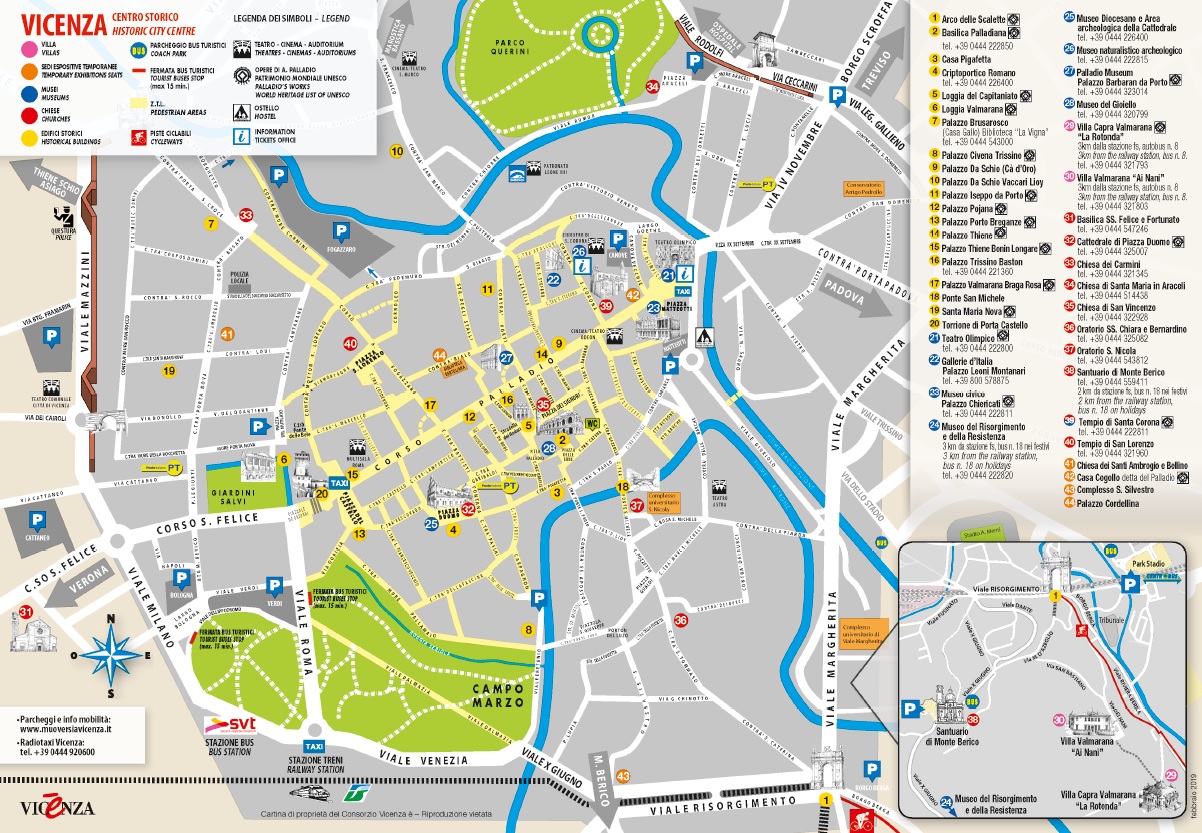
Download the map here
Making a journey to Vicenza means to establish a contact with the history of architecture. Romanic, Gothic, Renaissance, Baroque and Neo-classicism scenes decorate the infinite perspectives of the so-called "theatre-city".
The Teatro Olimpico
Piazza Matteotti 11 - Tel. 0444 964380
www.teatrolimpicovicenza.it This email address is being protected from spambots. You need JavaScript enabled to view it.
It is one of the artistic wonders of Vicenza. During the Renaissance, in fact, a theatre was not a building in itself, as it would later become, but a temporary arrangement of an outside space or an existing building; in Vicenza, these spaces were courtyards of palaces or the hall of the Palazzo della Ragione. In 1580, at the age of 72, Palladio was commissioned a permanent theatre by the Accademia Olimpica, the cultural group he belonged to himself. The design is clearly inspired by the Roman theatres, as described by Vitruvius: an elliptical terraced auditorium, framed by a colonnade, with a frieze topped by statues. In front of it is the rectangular stage and a majestic proscenium with two orders of architecture, opened by three arcades and divided by half-columns inside which we find aedicules and niches with statues and panels with bas-reliefs. Critics call the work “manneristic” because of the intense light and shade effect, which is also intensified by a series of other optic solutions the architect used thanks to his experience: the progressive diminishing of the fronts with height is visually compensated with the protruding statues; he plays with overhangs and niches to increase the sense of depth.
Palladio’s design was made a few months before his death and he would not see the result; his son Silla oversaw the works and handed the theatre over to the town in 1583. The first performance on Carnival 1585 was memorable; its subject was a Greek tragedy, Oedipus the King by Sophocles, and the stage design reproduces the seven streets of the city of Thebes, which can be seen in the five openings of the proscenium through a clever game of perspectives. The creator of this little wonder inside the wonder is Vincenzo Scamozzi. The effect was so impressing, the wooden structures became a stable part of the theatre. Scamozzi was also asked to create accessory spaces: the “Odeo”, the hall where the meetings of the Accademia took place, and the “Antiodeo”, decorated with monochrome panels by the fine Vicenza painter Francesco Maffei.

The Basilica palladiana
The most significant building is the Basilica, the core of which is the ancient Palazzo della Ragione of the Late Gothic period, with its loggias built byAndrea Palladio starting from 1546. At the ground floor we find some goldsmiths’ shops, which keep the historical vocation for trade of the town alive, as well as some venues for exhibitions.
A marble staircase of the late fifteenth century leads up to the upper loggia, from which we reach the hall with the characteristic copper roof, shaped like an inverted hull of a vessel. The picture of the Basilica is completed with the Torre di Piazza bell tower, also called Torre Bissara because it was erected on a defence structure of the powerful Bissara family. It is 82 metres high, with a square base of seven metres and a considerable inclination. The basilica, a prime example of Palladio’s architecture, stands in the most representative place in town, which embraced the great architect and saw him grow: the Piazza dei Signori, the former Roman Forum and the Medieval public place. The building we are talking about is the so-called Palazzo della Ragione, the ancient seat of the civil authorities. At the end of the 15th century it was decided to surround the original Gothic building with a double order of loggias, to embellish its image. This first initiative went wrong in the worst of ways, with a collapse after only two years after the inauguration, and some more forty years were needed for the Town Council to make up for the embarrassment. On the list of architectural counsellors were Sansovino (1538), Serlio (1539), Sanmicheli (1541) and Giulio Romano (1542). As it sometimes happened with too controversial issues, an inside solution prevails: Andrea Palladio, the young architect grown in the shadow of the humanist Gian Giorgio Trissino, who with his important contacts played a crucial role in submitting Palladio’s name to the Town Council. It is actually Palladio who gives the building a name true to his beliefs: Basilica, like the place in ancient Rome where politics and the most important businesses were run. At the age of 38 Palladio gets his first public commission, which, besides the generous and prolonged payment (5 ducats per month for the rest of his life), makes him officially the architect of Vicenza.
To put his plans into practice, however, he has to wait for three years more, until 1549, until the city’s government’s doubts are dispelled. Palladio’s design is based on the repetition of the Serlian window, made of an arch with a constant size flanked by two rectangular openings of variable size, thus able to absorb the different sizes of the bays, most of all at the corners of the building (this scheme was named after Sebastiano Serlio, who published it in a treatise on architecture in 1537). The material used was white stone from Piovene Rocchette, a place at the foot of the Asiago high plateau; it was a unique event because the quarry was completely emptied for this purpose. The cost of the building was exceptionally high: 60,000 ducats, apportioned over 65 years, because the works ended in 1614, 34 years after the architect’s death. As for the later events regarding the Basilica, we must remember the effects of the bombings during World War II, which demolished the building.
During the last 50 years the Basilica was used for shows and sport events, namely basketball games, when the female teams of Vicenza lead the national championship in the 1960es-70es. In recent years it has mostly been used for exhibitions, apart from the goldsmiths’ shops at the ground floor. In 2007 and 2008 important renovation and reinforcement works were carried out, which implied, among other things, the rebuilding of the arches that support the famous vault. The museum dedicated to the Jewellery was opened in 2010.
The piece of architecture which adds dignity to the Piazza is the Palazzo Chiericati, of 1550, the year Palladio gave the designs to Girolamo Chiericati. It is the most spectacular civilian residence designed by Palladio, today seat of the Vicenza Town Museum. It was purchased in 1838-39, then renovated and finally turned into a museum and opened in 1855.
The museum presents itself as one of the greatest art collections of the Veneto, with some of the most important works. Especially the picture gallery offers an overview of the art scenario of the sixteenth century, useful to explain the relationship between figurative arts and the architecture of the time. Particularly interesting are, first of all, the painters of the so called “School of Vicenza” of the Renaissance: the founder Bartolomeo Montagna, Giovanni Buonconsiglio, Marcello Fogolino and Giovanni Speranza. As for the sixteenth century, we have a remarkable work by Paolo Veronese, Palladio’s favourite artist: “Madonna and Child with Saint Peter and Saint Agnes”, but also works by Vittoria, Fasolo, Maganza and others of Palladio’s periodic collaborators. The survey goes on up to Tiepolo, showing also the followers of Palladian architecture.
In the Department of Prints and Drawings sketches and designs signed by Palladio, Scamozzi and are kept.
It is worth remembering that in front of the Palazzo Chiericati Palladio also built the Palazzo Piovene in 1569, exactly where the river Bacchiglione flows into the river Retrone; it was a contribution to right up the harbour area which Palladio supported warmly. The palace was demolished to build the town slaughterhouse.

Civic Art Gallery of Palazzo Chiericati
Piazza Matteotti, 37/39 - Tel. 0444 222811
This email address is being protected from spambots. You need JavaScript enabled to view it. www.museicivicivicenza.it
It is the most spectacular civilian residence designed by Palladio, today seat of the Vicenza Town Museum. The museum presents itself as one of the greatest art collections of the Veneto, with some of the most important works. Especially the picture gallery offers an overview of the art scenario of the sixteenth century, useful to explain the relationship between figurative arts and the architecture of the time. Particularly interesting are, first of all, the painters of the so called “School of Vicenza” of the Renaissance: the founder Bartolomeo Montagna, Giovanni Buonconsiglio, Marcello Fogolino and Giovanni Speranza. As for the sixteenth century, we have a remarkable work by Paolo Veronese, Palladio’s favourite artist: “Madonna and Child with Saint Peter and Saint Agnes”, but also works by Vittoria, Fasolo, Maganza and others of Palladio’s periodic collaborators. The survey goes on up to Tiepolo, showing also the followers of Palladian architecture.
In the Department of Prints and Drawings sketches and designs signed by Palladio, Scamozzi and Calderari are kept.
DOWNLOAD THE FOLDER

Natural History and Archaeological Museum
Contra' S. Corona, 4 - Tel. 0444 222815
This email address is being protected from spambots. You need JavaScript enabled to view it. www.museicivicivicenza.it
The Natural History and Archaeological Museum, housed since 1991 in the area of the cloisters of Santa Corona, is divided into two sections: Naturalistic and Archaeological. The first is devoted to the illustration of the characteristics of the territory, especially that of Berici, while the second one collects the most significant archeological aspects of Vicenza and its province.

Risorgimento and Resistance Museum
Viale X Giugno, 115 - Tel. 0444 222820
This email address is being protected from spambots. You need JavaScript enabled to view it. www.museicivicivicenza.it
Free entrance to the public
The Ambellicopoli hill, the site of the museum’s Villa Guiccioli premises, was where the heroic resistance of 1848 took place. The people of Vicenza defended the city from here. The mementoes in the collections provide interesting evidence of historic events from the time of Napoleon’s first Italian campaign in 1796 to the end of the Second World War and the fight for liberation (1945). This one and a half century period transformed the political, social, economic and moral nature of Italy and Europe several times.

Palladio Museum
Contrà Porti, 11 - Tel. 0444 323014
This email address is being protected from spambots. You need JavaScript enabled to view it. www.palladiomuseum.org
Palazzo Barbarano, one of the most beautiful Palladian urban dwellings, houses the Palladio Museum that accompanies the visitors on an emotional tour inside AndreaPalladio’s life and time, to discover Palladio’s masterpieces in Veneto region. Designed in 1569 by Andrea Palladio in the mannerist style that was typical for his late period. The façade has nine bays, richly decorated with festoons. It was commissioned by Montano Barbaran, who had the same great plans as Palladio’s other noble clients, and put a central plot of land at the architect’s disposal, with the task of blending the buildings on the plot to one palace worth of his ambitions.
The first thing we notice is that the atrium is out of centre, a forced solution (the client had purchased another building at an advanced state), but this does not alter the serenity of the work. The view at the entrance is very impressive: a series of Serlian windows is implemented, to support the upper hall with a cross vault and to compensate the different existing walls with flat planks. Actually, the Palazzo Barbaran is the only palace in Vicenza which was finished according to the design. Among other things, it is the building with the most important purpose: it is seat to the international centre for architecture studies “Andrea Palladio” (Cisa) and the Palladio Museum.

Galleries of Palazzo Leoni Montanari
Contrà S.Corona, 25 - Tel. +39 800.167619 This email address is being protected from spambots. You need JavaScript enabled to view it. www.gallerieditalia.com
This important Baroque palazzo rises in the final stretch of the Contrà Santa Corona. It was commissioned in 1623 by a family of rich wool and silk traders. It reveals very suggestive interiors, like the spectacular Loggia d’Ercole or the frescoed gallery “Galleria della Verità”.
It houses three permanent art collections belonging to the Bank: the first floor exhibits nuclei of vases, selected from the large Attican and Magna Graecia pottery collection, splendidly decorated with painted images. The same floor houses eighteenth-century Venetian paintings, from the ironic custom scenes by Pietro Longhi to the airy paintings by the “vedutisti” , who depicted the natural and architectural splendours of Venice and other cities. The second floor is dedicated to Russian icons, which take the visitor through a historic, artistic and spiritual route with the strength of their colours and fidelity to the antique models.

Diocesan Museum
Piazza Duomo, 12 - Tel. 0444 226400
This email address is being protected from spambots. You need JavaScript enabled to view it. www.museodiocesanovicenza.it
The residence of the bishop of Vicenza is a sober Palladian building of the beginning of the nineteenth century, rebuilt after its destruction during the Second World War, faithful to the original. Remarkable features are the stylistic details taken from Palladio (intersected semi-columns that mark the main body between the side bodies) and from Scamozzi (the combination of semi-column and corner pillar at the ends.
The building has a four-arch porch, above which there are eight windows, with windowsills and parapets made of finely decorated Nanto stone. The museum houses a collection of memorabilia of ancient Christianity, of the Church of the High and Early Middle Ages, as well as a collection of sacred vestments, sacred jewellery and religious paintings from the fourteenth to the eighteenth centuries. It features an extraordinary ethnographic section with artefacts from all continents and an exceptional collection of round shaped minerals. In the basement there is the archaeological area with remains of a tower of the high Middle Ages.

Church of Santa Corona
Contrà S. Corona - Tel. 0444 222811
This email address is being protected from spambots. You need JavaScript enabled to view it. www.museicivicivicenza.it
Free guided tours in Italian and English are available for smartphone and tablet users.
Magnificent Dominican Church in the form of a Latin cross was founded by the Dominicans to preserve the relic of the Holy Thorn, donated by the king of France Louis IX in 1259 to the bishop Bartolomeo da Breganze. It is presented to the public on Good Friday. Palladio was buried in this church in 1580; in mid- 19th century his remains were moved to the Temple of Fame at the Cimitero Maggiore, where the famous people of Vicenza rest. The interior is austere and solemn, with three bays and a presbytery designed in 1480 by Lorenzo da Bologna.
The Valmarana Chapel was designed by Palladio in 1567 but a very remarkable thing is the church’s artistic heritage: in the third chapel on the right, the Adoration of the Magi by Paolo Veronese, of 1573; in the chapel at the back of the right bay, The Saints Peter and Paul and Pius V Worship Mary, a work of art by the early Venetian Giovanni Battista Pittoni of 1723; the greater altar of 1669 with marble marquetry by the Florentine Francesco Antonio Corberelli; the fifth altar of the left bay shows The Baptism of Christ, a masterpiece of the late Venetian artist Giovanni Bellini (1427-1516). The whole surface of the grand complex of the high altar is covered with inlays of polychrome marble, pieces of lapis lazuli, corals, carnelians and mother-of-pearl.
The Dominicans were driven out in 1810, following Napoleon’s suppression, and the church became propriety of the town council. Today the adjacent monastery is the seat of the Museum for Archaeology and Natural Sciences.

Jewellery Museum
Palladian Basilica, ground floor Piazza dei Signori, 44 - Tel. +39 0444 320799
This email address is being protected from spambots. You need JavaScript enabled to view it. www.museodelgioiello.it
The first one in Europe and one of the few museums in the world exclusively dedicated to jewellery and the art of the goldsmith. The Jewellery Museum, a permanent museum space located in the Basilica Palladiana, is a Fiera di Vicenza project created in partnership with Comune di Vicenza. The Museum offers an unusual aesthetic experience in exploring jewellery, and promotes a very ancient object that is deeply rooted in human culture. Curated and directed by Alba Cappellieri, Professor of Jewellery Design at Milan Polytechnic and the main scholar of jewellery in Italy, presents the visitor with a scientific and educational trail set out on two levels. The innovative staging, designed by the international designer Patricia Urquiola, and the coexistence with the Palladian Basilica donate to the Museum a high artistic value. The curatorial choices have a very strong impact, and aim to reinstate the semantic complexity of jewellery from very disparate viewpoints, introducing the visitor to an awareness of different values and contents and, at the same time, of Vicenza as an authoritative cultural centre of jewellery.

The Galleries of Palazzo Thiene
Contrà S. Gaetano Thiene, 11 - Tel. 0444 320854
The palace stands on the Contrà San Gaetano Thiene, one of the central side roads of the Corso Palladio, in the part of the town opposite the Piazza dei Signori. The year before he went to see Rome with his mentor, the conte Gian Giorgio Trissino, who had a great influence on his architectural culture. Thus, it can hardly be a coincidence that his clients, the Thiene brothers from one of the most powerful families of Vicenza, are sophisticated people who are in contact with the highest ranking people in culture. The Thiene family had considered taking up an entire block in the historic town centre, with a view on the Corso, and involved one of the most famous architects at that time, Giulio Romano (1492-1546), who mostly worked for the Gonzagas in Mantua, but was in Vicenza in 1542 for advice on the Basilica and very likely to hand in a rough design of the Palazzo Thiene. When he died prematurely, Palladio, the rising architect, was now fit to replace him. The building shows characteristic features of both architects. Romano typically arranged the atrium with four columns and the lower part of the facade, while the trabeations and capitals on the piano nobile are clearly Palladian. This goes for the only completed part of the complex, which overlooks a side road of the Corso: the death of one of the clients and other events damp the enthusiasm about a building which would, without any doubt, have caused a sensation and aroused envy for its unusual dimensions.
Palazzo Thiene, with its artistic collections and rich interiors adorned by decorations and frescoes, is a well-preserved example of Renaissance art and it is representative of the highest form ofarchitectural art in Veneto. It has been a World Heritage Site since 1994 and in 2016 it was recognised as a building of exceptional cultural interest.The Palazzo officially becomes a Civic Museum starting from 15th January 2022, finally opening its doors to visitors. It is possible to visit the rooms at the basement and on the first floor, with an exhibition of paintings, Antonibon ceramics and local Venetian sets of dishes from the 19th century and the attic, where prints by Remondini and sculptures by Arturo Martini are showcased.
Sanctuary of Monte Berico
Viale X Giugno, 87 - Tel. 0444 559411
This email address is being protected from spambots. You need JavaScript enabled to view it. www.monteberico.it
The Basilica of Monte Berico is one of the greatest centres of Marian devotion in Italy, as well as an extraordinary monument, both for its architecture and its wealth of artistic objects. In front of the sanctuary there is the Piazzale della Vittoria, which opened in 1924 to commemorate the fallen of the First World War. It is 110 meters long, about 60 meters large and bordered by a stone balustrade, which lists the most important elements of the extraordinary panorama, starting from the mountain tops where the Great War took place.
The sanctuary overlooks the town from the first elevation of the Colli Berici and rises on the spot where the Madonna is said to have appeared to a peasant woman in 1462. In order to host the believers, an oratory was built, which after only a few years was to become the heart of the Gothic church that can still be seen at the rear of the complex. This building was expanded following a central plan scheme with about 12 meters per side during the sixteenth century, and it is ascertained that Palladio intervened as designer. This building was demolished at the end of the seventeenth century, to erect the present Baroque temple on a cross plan, the architect being Giacomo Borella; the building now rises before the fifteenth-century church, almost hiding it.
On the inside, the attention is drawn to the revered statue of the Madonna della Misericordia (Madonna of Mercy), by Nicolò da Venezia (1430), at the altar of the older church. Worth mentioning are the paintings, e.g. the masterpiece “Pietà with Saint Joseph, Saint John and Mary the Magdalene” of 1500, by Bartolomeo Montagna. What remains of the Palladian features are the north-east altar with the “Coronation of the Virgin” by Giulio Carpioni, and the huge painting of the Madonna appearing to the podestà (governor) Grimani, above the architrave that divides the two churches. In the refectory of the ancient monastery we find the spectacular “Supper of Saint Gregory the Great”, a big painting by Paolo Veronese of 1572, cut into 32 pieces by the Austrians in 1848. It has been restored in Vienna on their own expenses and brought back here in 1858.
The Roman Cryptoporticus
Piazza Duomo, 6 - Tel. 347/9426020
This email address is being protected from spambots. You need JavaScript enabled to view it. www.museodiocesanovicenza.it
On the outer side of the Piazza a low building gives access to the so-called Roman Cryptoporticus, remarkable archaeological evidence of the original town. At the time of ancient Rome a cryptoporticus was a gallery or covered passageway used to surround a public or religious building, to connect parts of an architectural complex or to store weapons or foodstuffs. The cryptoporticus that came to light on the south side of the Piazza Duomo has a U-shaped, three-armed structure with a barrelvaulted ceiling and a number of splayed windows turned towards the inside. Due to features, like the refined marmorino plaster, it is believed that it was an arcade connected to a luxury house of the 1st century B.C., facing the valley of the river Retrone. The discovered finds are kept in the archaeology department of the Museum Santa Corona.
Palazzo Thiene - CURRENTLY CLOSED TO THE PUBLIC
Contrà S. Gaetano Thiene, 11 - Tel. 0444 339989, 0444 339216
The palace stands on the Contrà San Gaetano Thiene, one of the central side roads of the Corso Palladio, in the part of the town opposite the Piazza dei Signori. The year before he went to see Rome with his mentor, the conte Gian Giorgio Trissino, who had a great influence on his architectural culture. Thus, it can hardly be a coincidence that his clients, the Thiene brothers from one of the most powerful families of Vicenza, are sophisticated people who are in contact with the highest ranking people in culture. The Thiene family had considered taking up an entire block in the historic town centre, with a view on the Corso, and involved one of the most famous architects at that time, Giulio Romano (1492-1546), who mostly worked for the Gonzagas in Mantua, but was in Vicenza in 1542 for advice on the Basilica and very likely to hand in a rough design of the Palazzo Thiene.
When he died prematurely, Palladio, the rising architect, was now fit to replace him. The building shows characteristic features of both architects. Romano typically arranged the atrium with four columns and the lower part of the facade, while the trabeations and capitals on the piano nobile are clearly Palladian. This goes for the only completed part of the complex, which overlooks a side road of the Corso: the death of one of the clients and other events damp the enthusiasm about a building which would, without any doubt, have caused a sensation and aroused envy for its unusual dimensions. For stylistic comparison see the villas Palladio designs the same year: Villa Caldogno, Villa Gazzotti, Villa Pisani, Villa Thiene and Villa Valmarana. The palace, bought in 1872 by Banca Popolare of Vicenza (Popular Bank of Vicenza), is today the historical seat of the Credit Institute and hosts its ancient art collection. The recent restoration of the basement must be mentioned.
Palazzo Valmarana Braga Rosa
Corso A. Fogazzaro,16 - Tel./ fax 0444 514397, cell. 347 7204658
This email address is being protected from spambots. You need JavaScript enabled to view it. www.palazzovalmaranabraga.it
The Palazzo Valmarana stands in the Corso Fogazzaro, a few meters from the junction with the Corso Palladio, the main street in the historical town centre. It is first monument that catches the eye and stands at n. 16. It was built by Andrea Palladio in 1565. It is typical because of the use of monumental architectural order of six bays, with intense light and shade effects, devised to place visual emphasis on the building, despite the restricted visual angle. In the building in front of it (n. 15), a plaque and a medallion mark the birthplace of the humanist Giangiorgio Trissino, who played an important role for the beginning of Palladio’s career.
The palace was commissioned in 1565 by one of the most famous families in town, the Valmarana family, who had supported Palladio’s work from his beginnings. The design presented in the Four Books of Architecture is an abstract concept of the real situation, in which the architect has to tackle an uneven plot of land, not wide enough to create the spectacular courtyard. Another handicap is the limited road width, which forces a very narrow angle on the onlooker. To compensate these hindrances, Palladio finds a solution which makes the Palazzo Valmarana the turning point of his idea of civil architecture. After designing his first Venetian churches, the architect applies a giant order to the building, which covers all his height: six composite pillars on a high ashlar base, inside which he puts a minor Corinthian order, which frames the openings and the decoration panels. The result is an intense light and shade effect, which is very effective inside the limited perspective. A subtle feature must be mentioned: two figures of Roman soldiers, with the emblem of the Valmarana family, which the architect puts on the high top of the facade, ideally to watch over the palace.
The Cathedral and The Underground Archeolgical Site
Piazza Duomo - Tel. 0444 325007
This email address is being protected from spambots. You need JavaScript enabled to view it.
The Cathedral has a history of more than 1,500 years. It was erected starting from 1430 in the Gothic form it still has today. A characteristic feature is the façade of 1467, with polychrome marble and blind arcades, attributed to Domenico da Venezia (1445-80). The building has one bay with side chapels and a tall presbytery. The Renaissance apsis was added by Lorenzo da Bologna (1466-1507). Palladio reportedly made changes in the dome (1558-66) and in the portal (1563) on the present Contrà Lampertico, but the architect’s name is also mentioned in connection with the tomb “Sepolcro da Schio” (1538) in the fifth chapel on the left. Among the decorations we find outstanding works: in the third chapel on the right, the Adoration of the Magi by Francesco Maffei (1605-60); fifth chapel on the right, the Dormitio Virginis, a polyptych of 1536 Lorenzo Veneziano (not. 1350-72); in the choir, a precious marble altar of 1541, surrounded by 12 huge seventeenth-century paintings called “Paramento Civran”; fifth chapel on the left, the Crowned Madonna, a sculpted altarpiece by Antonio da Venezia (not. 1429-58); forth chapel on the right, The Virgin and Child with the Saints Mary Magdalene and Lucia, by Bartolomeo Montagna (1450-1523). In the subsurface there are traces of former churches of the 5th, 6th, 11th and 13th century, as well as remains of an access road to the Roman Forum.
Church San Lorenzo
Piazza S. Lorenzo, 4 - Tel. 0444 321960
In the centre of the Piazza San Lorenzo stands the monument to the poet Giacomo Zanella (1820-1888), a priest who was Fogazzaro’s spiritual guide. The piazza is named after the church San Lorenzo, a remarkable example of Gothic architecture, which presents his splendid ogival portal, flanked by four baldachins.
The building goes back to 1280 and has a typical Gothic aspect. The focal point of the bayed façade is the wonderful portal with the pointed arch, characterised by its strong splay and rich sculpted decorations; in the lunette is the Madonna with the Child, Saint Francis and Saint Laurent, the latter introducing the client, by Venetian artist Andriolo de’ Santi (1344). On both sides we find the tombs of four famous people, protected by ogival baldachins. The interior, with a nave and two side aisles and strictly Gothic, has been embellished by several interventions over the centuries. In the right aisle on the counterfaçade we see the Madonna with the Child between the saints Sebastian and Antonio Abate, a remarkable hautrelief made of stone of 1475-1480. On the back wall of the right transept we see the spectacular altar “Pojana” of 1474, which unites elements of different origin. On the right side of the greater chapel there are two extraordinary paintings by Francesco Pittoni: The Presentation of Mary in the Temple and Christ’s Farewell to his Mother, created in the middle of the seventeenth century. On the left wall of the greater chapel there is the monument to Leonardo da Porto, of 1564, set as a temple, for the design of which Palladio had been considered, and the monument to Iseppo da Porto, of 1572, with the urn guarded by two warrior figures. In the chapel left to the presbytery we find the tomb of Bartolomeo da Porto, of the beginning of the fifteenth century, with the urn and the figure of the deceased protected by a baldachin. Near the church is a suggestive cloister of the late 15th century.
Chiesa dei Carmini
Corso Fogazzaro, 254 - Tel. 0444 321345
This email address is being protected from spambots. You need JavaScript enabled to view it.
Beyond The junction with the line of the ancient boundaries, the Corso Fogazzaro preserves long stretches of arcades and offers views of the town as it was in the centuries gone by. At number 105 a plaque marks Fogazzaro’s birthplace. Going on, we reach the wide stretch of the church Chiesa dei Carmini, in Gothic style, with its characteristic white and pink facing. Further on, we see the road pass under the Porta Santa Croce at last and go on in north-west direction towards Schio, joining the state route n. 46 “del Pasubio”.
The church Chiesa dei Carmini overlooks the wide stretch that opens the outer stretch of the Corso Fogazzaro, not far from the Porta Santa Croce. The church is a marvellous Gothic building, erected around 1375, typical because of the two-coloured outer covering.
What strikes the eye is the decoration, starting from the marble representation in the lunette of the side portal, the Madonna with the Child between Saint Albert and Saint Paul, by the German Johann Baptist Krone (XVI-XVII cent.). Inside we see valuable ornamental bas-reliefs of the late fifteenth century and some important paintings: at the first altar on the left, the Madonna on the Throne between Saint Sebastian and Saint Rocco, of 1535, by Benedetto Montagna; at the second altar on the left, Carrying the Dead Christ, by Jacopo (1510-92) and Francesco Bassano (1540-92); at the third altar on the right, Eternal Father and Dead Christ, by Paolo Veronese (1528-88).

Parco Querini
Viale Rumor – Contrà Chioare - Viale Rodolfi - Tel. 0444 222148
This email address is being protected from spambots. You need JavaScript enabled to view it.
The Parco Querini stretches out in the north-eastern part of the old town centre. It is defined on two sides by the banks of the river Bacchiglione and his tributary, the river Astichello, just after the Ponte Pusterla, and on the third side by the line of the Venetian walls, along the present Viale Rodolfi. The park takes its name from the Palazzo Querini, which fronts the Contrà San Marco, and from which a straight road starts, that, once crossed the Asticello, stretches out into the green, along with statues and sculptures of the eighteenth-century school.
The end of the walk is the pond, in the middle of which a round island has been created. On its top we find a small Ionic temple, a fine neoclassical piece of architecture of 1820. In the background we see the white church of Araceli and the mountains of the Vicenza area. A part of the garden has been arranged in the 19th century according to the romantic taste.
Villa Almerico Capra Valmarana "La Rotonda"
Via della Rotonda, 45 - Tel. 0444 321793, 333 6409237
This email address is being protected from spambots. You need JavaScript enabled to view it. www.villalarotonda.it
The original of Palladio’s most famous villa stands in the suburbs of Vicenza, on the state road n.247 “Riviera Berica”, which runs south towards Noventa Vicentina. Palladio designs it in 1566 for the canon Paolo Almerico, who after leaving his brilliant career at the papal court, comes back to his birthplace and prefers the quiet countryside to the family palace.
However, it will take forty years, at the end of which both the architect and his client will pass away, for the brothers Odorico and Mario Capra, who took over the property, and the architect Scamozzi, Palladio’s spiritual heir, to finish the works. It is no coincidence that the villa stands on top of a hill, in the countryside that stretches out from the banks of the river Bacchiglione to the Colli Berici. The image is the image of a temple-villa, almost cubical, with façades bearing a pronaos with majestic Ionic colonnades and triangular tympanums, topped by a dome which at the beginning was planned like the Roman Pantheon, and should be opened by an oeil-de-boeuf, but then was squashed and closed. The service buildings are not only separated from the villa, but also hidden from view, behind the hill.
From this point of view it is important that the Villa Rotonda has been inserted into the volume of the Four Books of Architecture which is dedicated to the palaces, more a suburban residence than a country house and farm. Its basement is dedicated to the service rooms, and the piano nobile is arranged around a majestic circular hall which takes up the whole height, hence the name “Rotonda” (round), with access corridors and corner rooms on two levels (on the upper floor, the author’s intention was to turn them into a sort of covered passageway).
The romantic park is also remarkable; it opens up to the cultivated land all around. This residence has been imitated many times over the centuries, particularly in England.

The Villa Valmarana "Ai Nani"
Via dei Nani, 8 - Tel. +39 0444 321803
This email address is being protected from spambots. You need JavaScript enabled to view it. www.villavalmarana.com
The villa Valmarana rises on the Colle di San Bastian, the soft ridge that overlooks the road “Riviera Berica” on one side and the so-called Valletta del Silenzio (Valley of Silence), described in Fogazzaro’s novels, on the other side, against the background of the Colli Berici.
The villa gets its nickname “ai nani” (dwarfs) from the sculptured dwarfs with eighteenth-century clothing, lined up on the perimeter wall. Legend has it that they were the guardians of an unhappy young girl. The building complex was erected in the seventeenth- eighteenth century.
It consists of three buildings standing on an oblong piece of land: the large colonnaded atrium with the stables; the guest quarters on a single level, with a hall surrounded by a few living rooms; the villa, preceded by a flight of steps, has the typical scheme with a central hall with four smaller corner rooms.
The villa is mostly famous for the frescoes painted by the Tiepolos: father Giambattista (1696-1770) frescoed the villa with mythological and epic subjects, his son Giandomenico (1727-1804) instead frescoed most of the guest rooms with different subjects, from carnival scenes to scenes with eastern atmosphere. Inside the villa Valmarana ai Nani we can admire a portrait of Andrea Palladio.
.... and the Oratorio of San Nicola, the churc of Santo Stefano, Palazzo Cordellina ...
See here opening times and rates of villas, monuments, churches of Vicenza and its surroundings!
INFORMATION
Tourist Office – Piazza Matteotti, 12
tel. 0444 320854 This email address is being protected from spambots. You need JavaScript enabled to view it.
www.facebook.com/iatvicenza
*The Olympic Theatre, the Civic Museum of Palazzo Chiericati, the Natural history and Archaeological Museum, the Church of Santa Corona are open to the public from Tuesday to Sunday, from 9 to 17 (last entrance at 16.30)
Pop, the short show of lights and sounds inside the Olympic Theatre is scheduled from Tuesday to Sunday, at the following hours:
9.30, 10.30, 11.30 + 14.30, 15.30, 16.30.
The Galleries of Palazzo Thiene are open as usual from Thursday to Sunday, from 09 to 187 (last entrance at 16.30).
The Risorgimento and Resistance Museum can be visited from Tuesday to Sunday, from 09 to 13.00 and from 14.15 to 17.00 (last entrance at 16.30).
The Basilica Palladiana can be visited from Tuesday to Sunday, from 10 to 18. It is possible to visit the loggias on the first floor and the main hall. The panoramic terrace is officially closed for the winter season.
Le Gallerie d'Italia - Palazzo Leoni Montanari are open from Tuesday to Sunday, from 10 to 18.
The Diocesan Museum is open every day from 14 to 18.
The Jewellery Museum can be visited in the following days:
from Tuesday to Friday: 10 to 13 and 15 to 18
Saturday and Sunday: 10 to 18
The Palladio Museum can be visited from Wednesday to Sunday, from 10 to 18.
For all museums, the last possible admission is at least 30 minutes before closure.
As for the private villas that can be visited right outside the city centre:
Villa Valmarana ai Nani is open everyday from 10 to 18. https://www.villavalmarana.com/
Villa La Rotonda is open exclusively by booking one of their guided tours (see all dates on their website: https://www.villalarotonda.it/ )
It is most advised to check the respective offical websites for early closures.
DOWNLOAD THE CHART WITH THE UPDATED OPENING TIMES OF CULTURAL SIGHTS
CLICK HERE TO CONSULT THE CHART ON THE OPENING TIMES DURING MARCH AND THE EASTER HOLIDAYS
Tickets and Information:
Tourist Information Office, piazza Matteotti 12, open everyday from 9 to 17.30, tel. 0444 320854, This email address is being protected from spambots. You need JavaScript enabled to view it.
Infopoint in Basilica Palladiana, da martedì a domenica; tel. 0444 222855
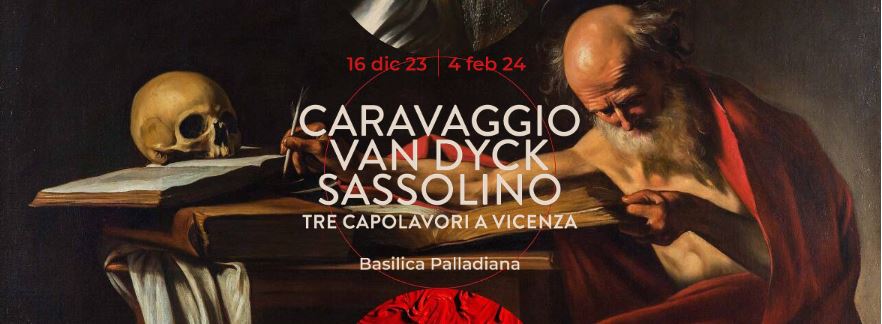
16th December 2023 – 4th February 2024
Open everyday
from Monday to Sunday 10 am - 6 pm
Special openings
25th December 2023 ( 3 - 8 pm ) and 1st January 2024 (3 - 6 pm)
Special closings
25th December 2023 and 1st January 2024 in the morning
Knowledge and rise intertwine endlessly through the flowing of time, a neverending circular motion in which the different stages of the life of every human being take turns: this is the invisible theme which runs through the exhibition event “Three masterpieces in Vicenza”.
Inside the stunning background of the Basilica Palladiana the audience will be able to admire three masterpieces, each one of them bearer of a deep message: San Girolamo by Caravaggio, The four stages of man by Antoon Van Dyck and an unpublished work from the contemporary Vicenza’s artist Arcangelo Sassolino, No Memory Without Loss.
After hosting different famous paintings from national and international museums, for the first time Basilica Palladiana will welcome one of the most important paintings in the world, the San Girolamo of Michelangelo Merisi known as Caravaggio, painted in 1606 and housed in the Galleria Borghese in Rome. In the painting San Girolamo is depicted as a man of study devoted to the knowledge. Warm and cool tones evokes the neverending chase of the opposites: life and death, past and future and relentless passage of time.
The cycling flowing of time returns even in one of the most important works hosted by the Civic Museums of Vicenza, The Four Stages of Man by Antoon Van Dycks wich represent the season of life: childhood, adulthood and the old age. The dialogue between the two masters will be enriched by Arcangelo Sassolino, already present at the Art Biennale of 2022 for the Malta pavilion with a work for Caravaggio. The three paintings will lead us through the oniric and mysterious dimension of time.
TICKETS
5 € full ticket
2 €
Free entrance for citizens of Vicenza and province, primary and middle schools
For the non-residents in Vicenza and/or province the admission is included inside the Basilica Palladiana’s ticket.
Basilica Palladiana is provided with lift for disabled persons.
The cultural events organized during the exhibition opening tims are free and included in the Basilica’s ticket.
Official site: https://www.mostreinbasilica.it/
Stars, light cascades and shows, a beautiful spruce in Piazza dei Signori alongside decorated trees in all the squares, an indoor ice rink, christmas markets, New Year's Eve in viale Roma and masterpieces inside the Basilica Palladiana.
These are the most important events that will take place for Christmas 2023 in Vicenza: it will start on 1st December at 5 pm, with the switching on of the Christmas lights in Piazza dei Signori and a concert with a choir composed by 80 middle school students of Vicenza.
A busy schedule of Christmas markets will liven up the city centre all the weekends until 7th January.
Piazza Biade, corso Palladio and for the first time Piazza Matteotti will be animated by the Christmas markets from 1st until 26th December: in Piazza Duomo the “Il Tritone” association will parade with the bagpipers and the Bernese Mountain Dogs, while in piazza San Lorenzo the “Christmas Village of Coldiretti” will bring Vicenza’s traditions during the weekends with a lot of activities (creative cuisine workshop, shows and concerts…).
For two weekends Handmerry Christmas will be in Corte dei Bissari and Piazza dei Signori with handicrafts and entertainment.
Holidays will end up with the three days of the Epiphany Fair in viale Roma and piazza Castello curated by “Non ho l’età” association hosting “Unico” - handmade items and antiques market.
The Loggia del Capitaniato will host two charity events:
-the 2nd edition of Merry Illustri, which will share the artist’s illustration for charity;
-Fondazione Città della Speranza will hand over artworks received as a donation to support pediatric research.
All the events will be collected in a single leaflet which will be ready in the next days, printed and distributed in all the comunal headquarters, but you can also look for them on the website of the Municipality of Vicenza or divided by topics at this link.
The indoor ice rink of Campo Marzo will be opened on Saturday, 25th November at 4 pm. For the first time it can be also used by disabled people thanks to a special and certified support for their wheelchair available for free from 27th December.
There will be animated reading in the seats of the Bertoliana library, the usual nativity scene routes throughout the city centre and in the neighbourhoods, musical events in the churches, Vicenzatour’s guided tours devoted to the Christmas and different itineraries in the museums.
The spurce in Piazza dei Signori and the 5 trees dislocated in the squares are real trees: the first one is 10-meters high and it will be set up on Friday 24th November, while the others are 5-meters high and they will be located in piazza Matteotti, Castello, Biade, san Lorenzo and in contrà Garibaldi. All of them will be embellished with led lights with the “branch to branch” technique. Trees and lights will be turned on everyday from 4:30 pm to 12 pm.
Moreover, from the 15th to the 24th of December two Christmas locations will be graced with lights and benches in Largo Zileri and contrà Garibaldi, where tourist and citizens can take selfies and photos.
There will be a lot of charity events during the Christmas holidays:
-8th December, “Insieme per la vita” live Tv with Tva Vicenza for charity;
-9th December, the Advent Concert at the Comunal Theatre;
-15th December, Corri Babbo Natale, the typical Christmas March for helping heart children patients;
-22nd and 23rd December, food collection in the supermarkets thanks to the Red Cross;
-in the Zavatteri's hall of the Basilica Palladiana there will be an exhibition in support of autistic children.
The events schedule of the neighbourhoods is always crowded with meeting, nativities scenes in the churches and Christmas markets.
VISIT VICENZA
the schedule with all the museums’ opening times -> DOWNLOAD HERE
HOLIDAY SPECIAL OPENINGS confirmed for the Olympic Theatre or for the Civic Museums: 8the and 26th December 2023, 6th January 2024.
WHERE TO PARK?
As well as the usual parking areas, this year there will be 5 more parking areas and free park and ride info
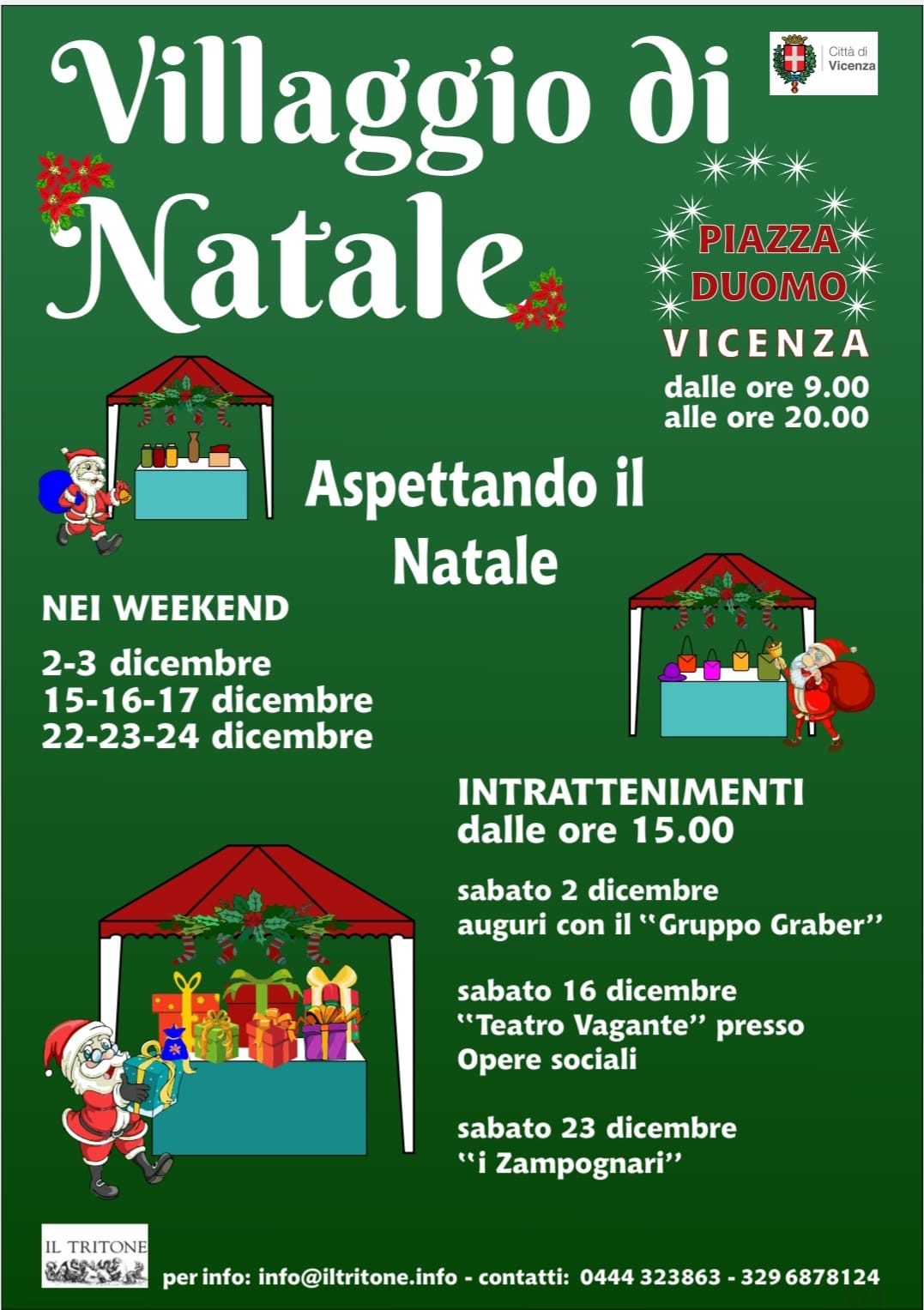
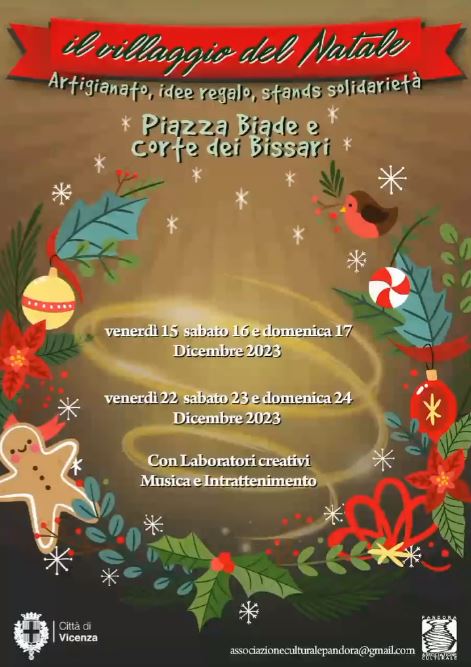
FOTOGALLERY
*The Olympic Theatre, the Civic Museum of Palazzo Chiericati, the Natural history and Archaeological Museum, the Church of Santa Corona are open to the public from Tuesday to Sunday, from 9 to 17 (last entrance at 16.30)
Pop, the short show of lights and sounds inside the Olympic Theatre is scheduled from Tuesday to Sunday, at the following hours:
9.30, 10.30, 11.30 + 14.30, 15.30, 16.30.
The Galleries of Palazzo Thiene are open as usual from Thursday to Sunday, from 09 to 187 (last entrance at 16.30).
The Risorgimento and Resistance Museum can be visited from Tuesday to Sunday, from 09 to 13.00 and from 14.15 to 17.00 (last entrance at 16.30).
the Basilica Palladiana can be visited from Tuesday to Sunday, from 10 to 18. It is possible to visit the loggias on the first floor and part of the main hall, due to the presence of a temporary exhibition (more information on the exhibition here). The panoramic terrace is officially closed for the winter season. The Basilica is closed to the public from the 11st to the 16th of December. A new exhibition starts on the 16th at 2pm: www.mostreinbasilica.it
Le Gallerie d'Italia - Palazzo Leoni Montanari are open from Tuesday to Sunday, from 10 to 18.
The Diocesan Museum is open every day from 14 to 18.
The Jewellery Museum can be visited in the following days:
from Tuesday to Friday: 10 to 13 and 15 to 18
Saturday and Sunday: 10 to 18
The Palladio Museum can be visited from Wednesday to Sunday, from 10 to 18.
For all museums, the last possible admission is at least 30 minutes before closure.
As for the private villas that can be visited right outside the city centre:
Villa Valmarana ai Nani is open everyday from 10 to 18. https://www.villavalmarana.com/
Villa La Rotonda is open on Saturdays and Sundays. https://www.villalarotonda.it/
It is most advised to check the respective offical websites for early closures.
DOWNLOAD THE CHART WITH THE UPDATED OPENING TIMES OF CULTURAL SIGHTS
CHRISTMAS HOLIDAYS
Tickets and Information:
Tourist Information Office, piazza Matteotti 12, open everyday from 9 to 17.30, tel. 0444 320854, This email address is being protected from spambots. You need JavaScript enabled to view it.
Infopoint in Basilica Palladiana, da martedì a domenica; tel. 0444 222855








